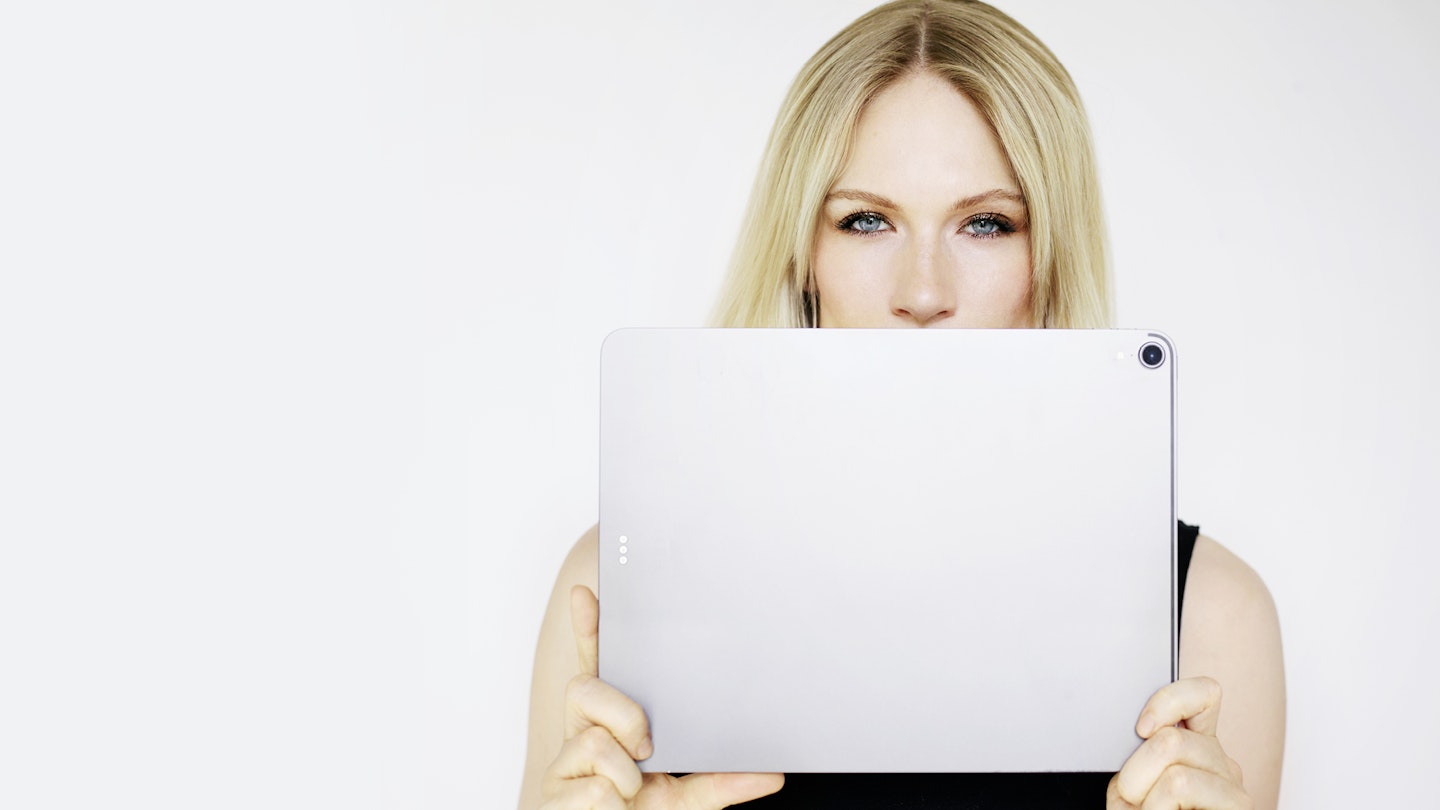It was during a Zoom consultancy session with a skincare specialist that I first noticed how horrifically wonky the teeth in the lower left front of my mouth are. I’d angled my laptop in a particular way so that my consultant might get the best view of my mush – higher than usual, in sunlight – I’d laughed at something she said, glanced at the screen as I did so and... dear Lord! The ugliness of those three teeth! How jagged and pokey and just grotesque they seemed! The rest of the consultation was lost in my mentally obsessing over the teeth, to the detriment of my open pores (why I’d Zoomed her in the first place). How had I never noticed before? How had I gone around, utterly unselfconsciously, opening my mouth willy-nilly and a lot, chatting and smiling and eating and yawning, completely ignorant of this epic facial flaw?
‘Polly: help. I need filler in my puppets,’ said my friend L, who is Italian and speaks excellent English, though occasionally specific words escape her. On our WhatsApp video call she indicates lines from the corners of her mouth towards her jaw.
‘You mean “marionettes”?’ I suggest – those deep creases that can develop in that area.
‘Yes: puppets!’ she says.
I peer at the screen. ‘You haven’t got any puppets.’
‘I have! I see them on Microsoft Teams,’ she replies. ‘Doesn’t show so bad on WhatsApp.’
‘My facial expressions are really off,’ says T. ‘Why didn’t you tell me? I look so haughty!’
‘I just look tired. Droopy, jowly, tired,’ says M.
‘I can see frown lines developing, every time I Zoom,’ says Z, who is 28, line-free and mad. ‘Like, spreading and multiplying in front of my eyes! I’m going to have so much preventative Botox when we get out.’
‘In some lights, I look OK on video call,’ says C, ‘in others, I look dreadful – but which one is accurate? How do I tell?’
It seems every woman I know, and quite a lot I do not, has come down with a serious case of Zoom Face: the lockdown-specific, video-call-transmitted conviction your face is imperfect in ways of which you were once completely oblivious. But, now you know, you definitely need to fix ’em, with serums and LED masks, facial exercises and practising one-on-one video sessions with yourself so as to retrain your face into less haughty/moody/tired/drooping resting modes. All of which will just have to ‘do’ until the Botox clinics and cosmetic dentists surgeries reopen, at which point, presumably, they’ll be under such sudden pressure they’ll have to prioritise access like the supermarkets did, back when people were still hoarding.
So much time spent video conferencing – attempting to focus on what others are saying, while being perpetually distracted by the digital replication of our own faces – is negatively impacting our relationship with our appearance. Deeply. ‘This is an awful thing to say,’ whispers one friend on a rare, precious audio call. ‘But I’m beginning to hate my face for the first time in my life. Like: despise it.’
My heart breaks for her, but: honestly? I’ve had moments of feeling like that, too. The wonky teeth incident was only the last in a series of unfortunate Zoom-related revelations, during which I’d found reason to loathe pretty much every square inch of my face. I’ve only stopped now, after locating the auto touch-up setting on my Zoom app, which filters my face to a faintly creepy smooth-edged quasi degree of perfection. I struggled a bit at first, on both the feminist principles of doing this, and the potential implications for my already- shaken body image (how would I handle the chasm between this constantly filtered version of me and the reality, long-term?), but just couldn’t bring myself to turn it off.
Also: ‘Babe. Everyone’s got touch-up on,’ says my friend Z of the preventative Botox. ‘Leave it off and you’re like one of those cyclists who isn’t on steroids, when everyone else is.’
‘I have special lighting that I use specifically for Zoom calls,’ says my friend, the aesthetician Dr Sarah Tonks, who I itch to visit for Botox. ‘Comparison [aka the galley-view feature] is the thief of all joy. If you see other people looking amazing during lockdown, then compare yourself, you probably won’t come off too favourably, but that’s partly because the resolution on video calls is so low, it’s like they’ve got a built-in filter by the time their face hits your screen.’ And that’s assuming they haven’t switched on the actual built-in filter – which they probably have.
What are the deeper implications of all this on our mental health?
Some of us are certainly adapting to the demands of increased video calls better, and more quickly, than others – just as some of us found our good angles and acquired flattering mini iPhone halo lights to up our Instagram selfie game, back in the pre-corona era. There’s that highly addictive auto touch-up function. There’s Dr Tonks’ special lighting. And there’s the make-up. Lynne Sanders, founder of A La Carte London cosmetics, told me, ‘We’re seeing a bias in make-up sales towards concealers, bronzers and eyeliners, all of which we attribute to the brave new world of Zoom. We’re learning the tricks film and TV make-up artists have always known: the camera drains colour and flattens features, we need to bring back healthy tones and structure with bronzer.’
.jpg?auto=format&w=1440&q=80)
All the skin and haircare specialists with whom I speak are reporting huge upticks in sales on the kinds of products that matter most on Zoom. WOW’s root cover powder and Revitalash’s eyelash and brow growth serum are each reporting 40% sales increases since lockdown began, while beauty behemoth L’Oréal has experienced a 240% increase in online conversation around face masks (cosmetic, not medical); and Google searches on at-home Botox alternatives – such as Acmella oleracea, an essential compound of Venn’s star product, Revitalizing Lifting Mask – are sky high.
Which is great for those businesses – but how good is it for our minds? What are the deeper implications of all this on our mental health? Not good, according to Dr Miriam Liss, a professor of psychology at the University of Connecticut, who specialises in body image. ‘In order to understand how video meetings may be affecting us, it is important to understand a psychological theory called “objectification theory”,’ she tells me. ‘This posits that living in a world where women’s bodies are consistently objectified has negative psychological consequences, because women begin to objectify their own bodies. This is called “self-objectification” and has to do with taking a third-person perspective on one’s body, which leads to body shame since, more often than not, our body does not meet our internalised standards of beauty and thinness.
‘This theory was developed in 1998, before the rise of selfies and Zoom calls, so things have only grown worse since then. Selfies are a constant opportunity to place oneself in a state of self-objectification. They also encourage people – most of the research has been on women – to compare themselves to others, even compete for likes and positive comments. My research found that women who tend to self-objectify are more likely to use photo-editing or to take many selfies before they post. These behaviours are related to increased feelings of depression – partially through a feeling of deception: if the selfies you are posting are not accurate reflections of yourself, compliments or likes may feel hollow. In our study, a sense of deception was related to feelings of depression.’
And what of Zoom calls? ‘No one has published research on this, since it is such a new phenomenon,’ says Dr Liss. ‘But based on what we know about self-objectification, as well as what people are anecdotally reporting about their experience with Zoom calls, we can draw some conclusions. Watching one’s own face during a Zoom call is putting oneself into an immediate state of self-objectification. All of the negative effects of self-objectification likely apply. This means that people are likely distracted during their calls by seeing how their face looks, and comparing themselves both to other people on their call and to their own idealised image of how they should look.
‘Instead of concentrating on meetings, people are likely wondering if they are getting a double chin (given the fact that people are stress baking/drinking and gyms are closed, a lot of people are worried about weight gain), or evaluating the severity of the bags under their eyes. Imagine if this is how it was in day-to-day life – imagine if every time we had a conversation with someone else in real life, there was a mirror on their shoulder. We would be so distracted, we would likely be unable to hold up our end of the conversation.’
If Dr Liss’s analysis is hard for you to hear – and it’s pretty hard for me to hear, I won’t lie – that’s because you know there’s truth in it.
So what can we do about it?
‘If I had to give one piece of advice, I would say turn off self-view,’ says Dr Liss. Turns out, there’s a Zoom setting that allows others to see you, but stops you seeing yourself (which I’d somehow missed in my eagerness to turn the auto touch-up feature on). To turn off self-view on Zoom: join the meeting, right-click your video to display the menu, choose: Hide Myself. While there isn’t an equivalent option on Microsoft Teams, I discover, while googling it, how you can turn yourself into a speaking potato, which could also do the trick.
So now you know what to do to cure your Zoom Face in one easy sweep: how to eradicate it from your consciousness altogether. Question is: will you? Will I? Or will we all just carry on with this self-sabotaging, body image-dismantling exercise, just as we keep on taking and posting selfies, long after having realised how deeply they’re hurting us?
See More: Life After Lockdown
Life After Lockdown in Pictures - Grazia
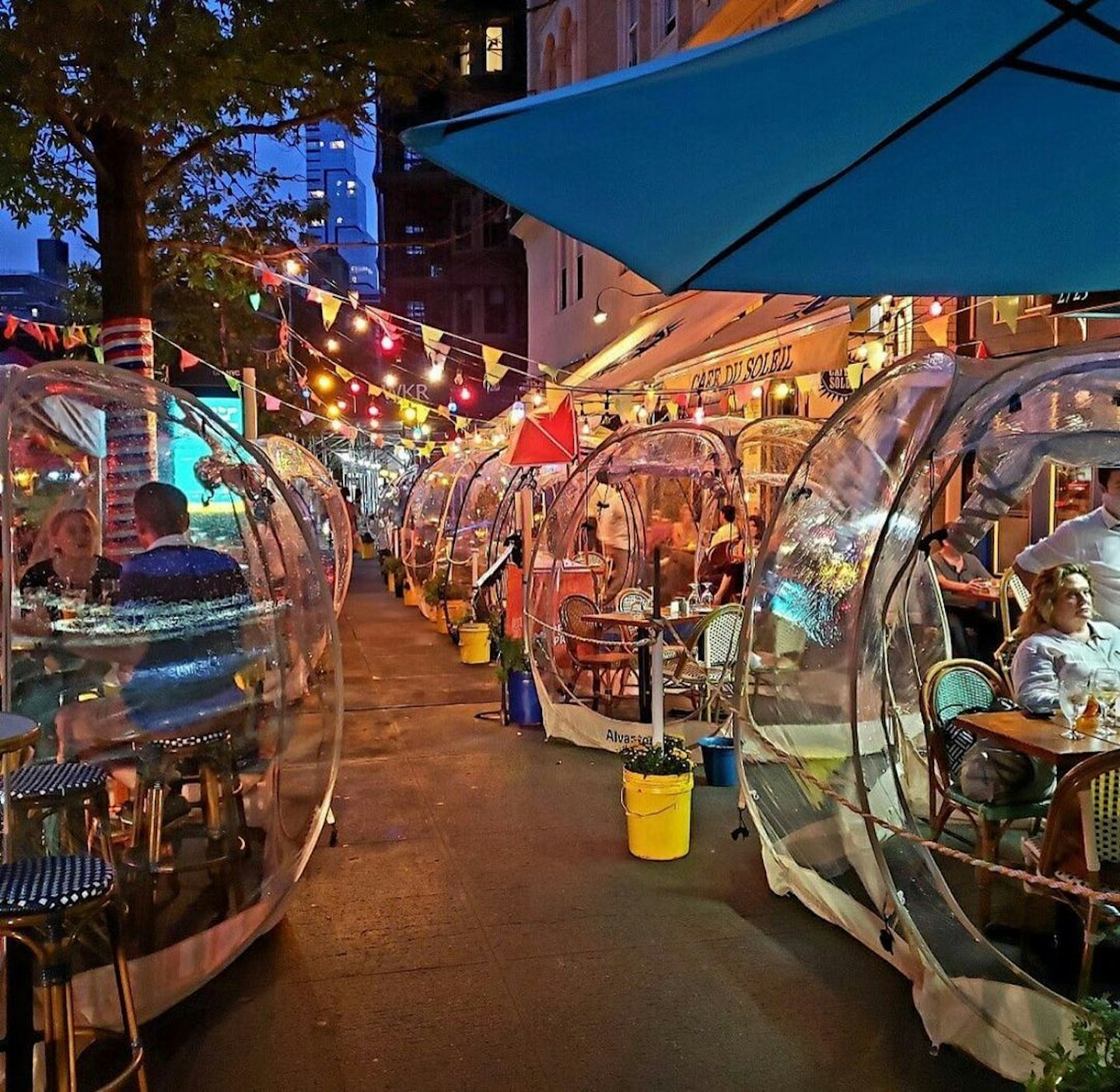 1 of 47
1 of 47New York, USA
The Cafe du Soleil sets up igloos outside for its diners to allow for social distancing.
 2 of 47
2 of 47Catania, Italy
Sara, who has just given birth to baby Olivia, wears a protective mask as father Angelo takes a picture of his new daughter through a glass wall.
 3 of 47
3 of 47Paris, France
Students exercise outside as they return to school on 15 May.
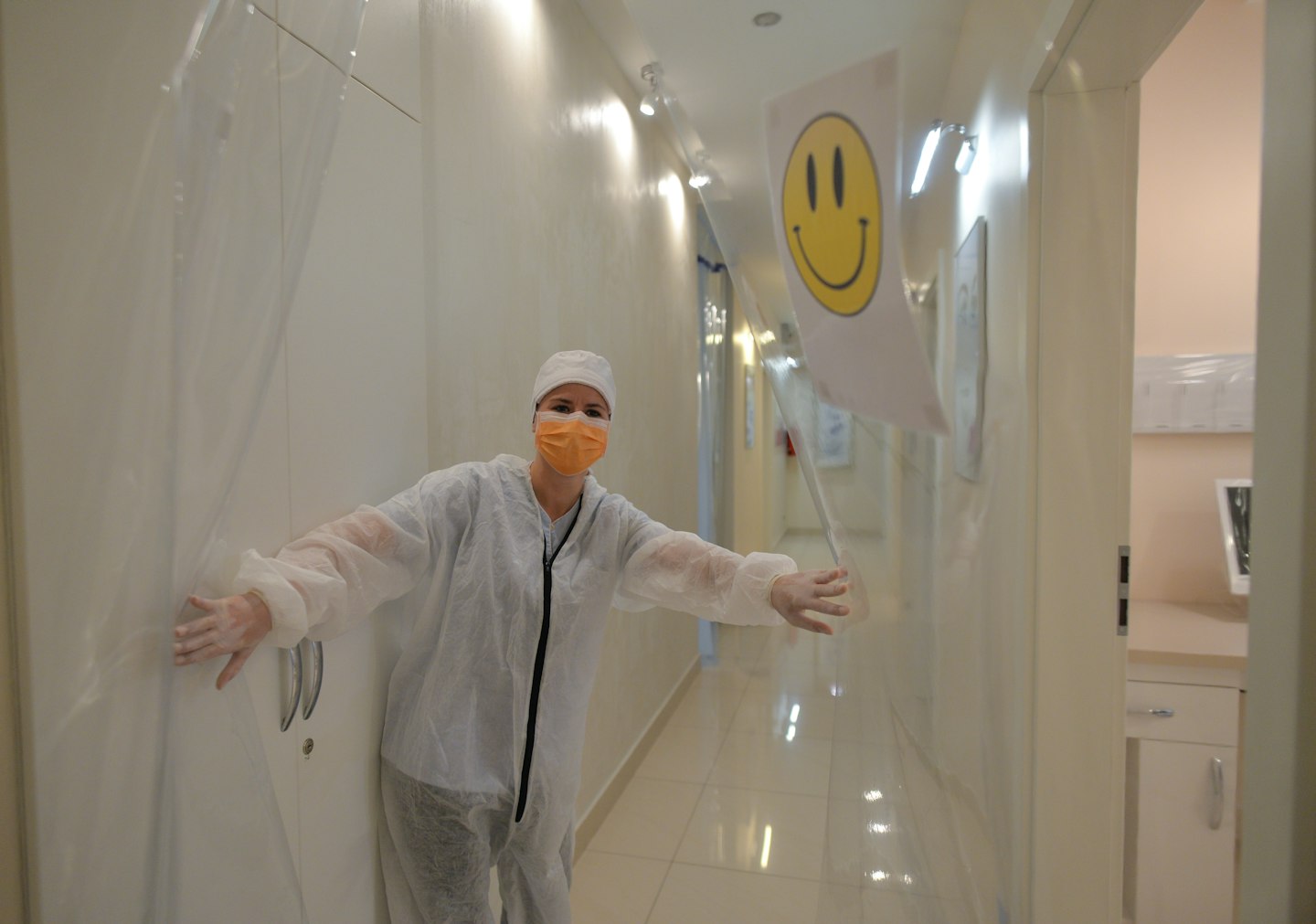 4 of 47
4 of 47Krakow, Poland
A dental hygienist wearing PPE welcomes patient at a dentist's office in Krakow on 15 May.
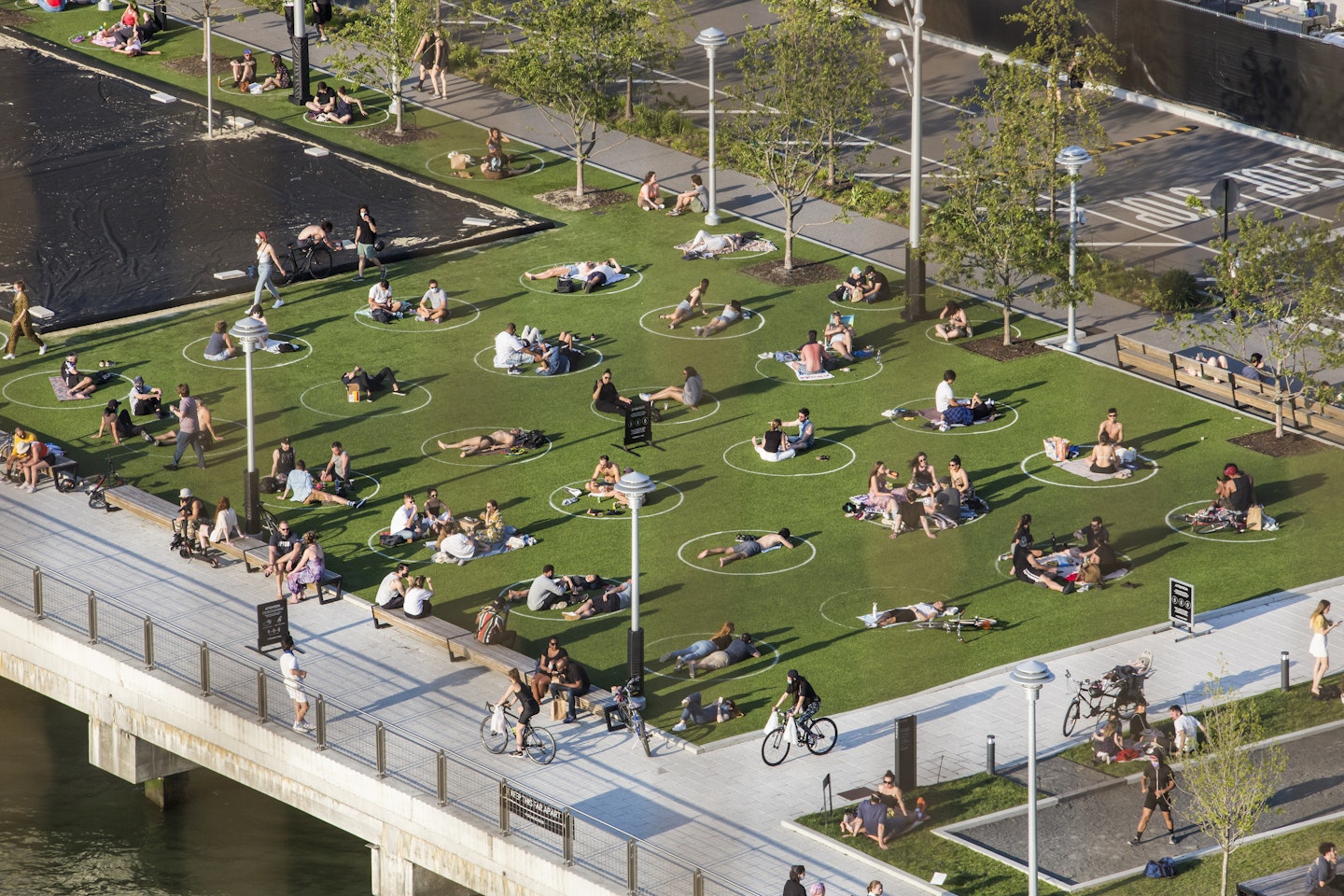 5 of 47
5 of 47New York, New York, USA
Social distancing circles are used at Domino Park in Brooklyn, New York on 15 May.
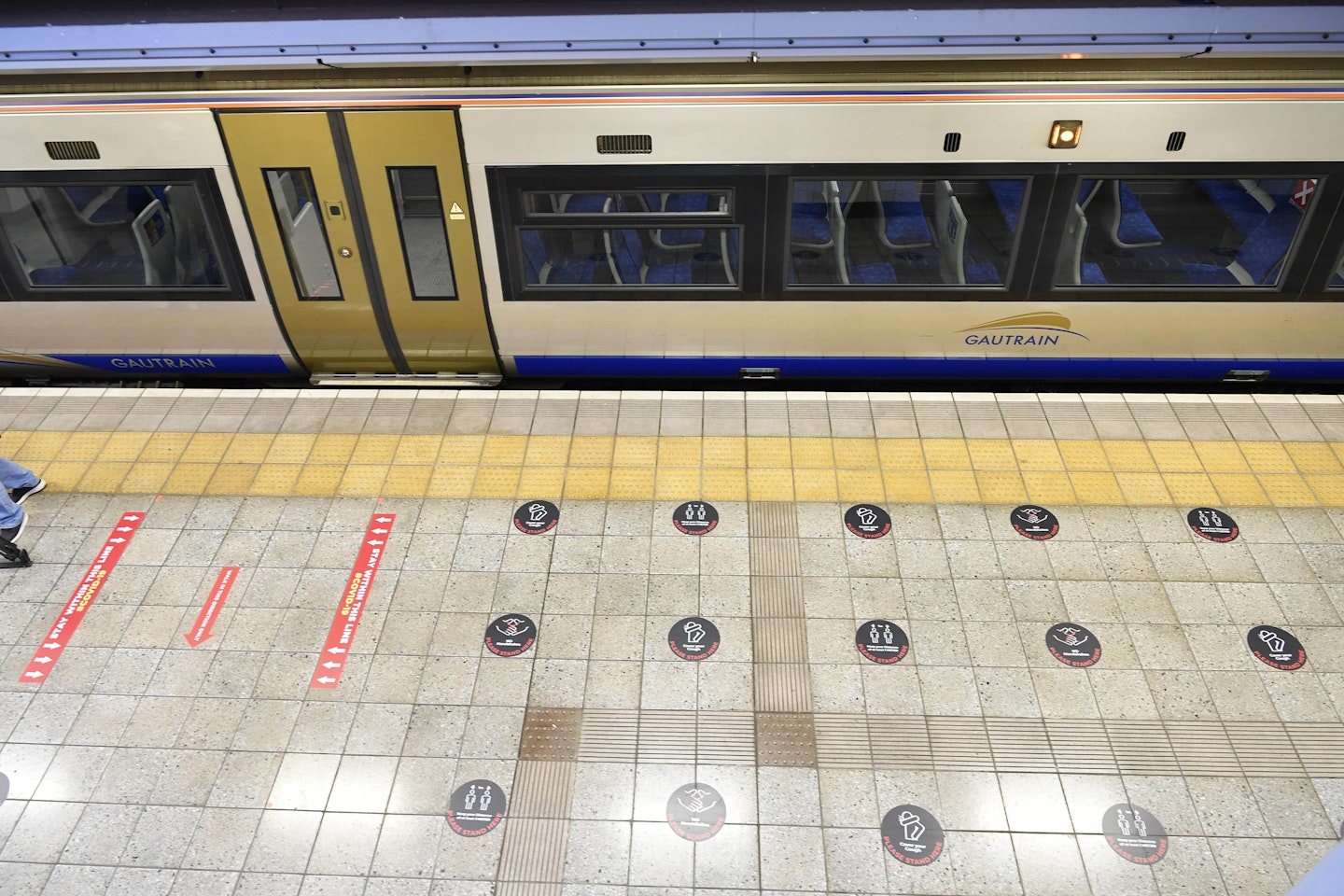 6 of 47
6 of 47Johannesburg, South Africa
Social distancing markers are displayed at a train station in Johannesburg, South Africa on 4 May.
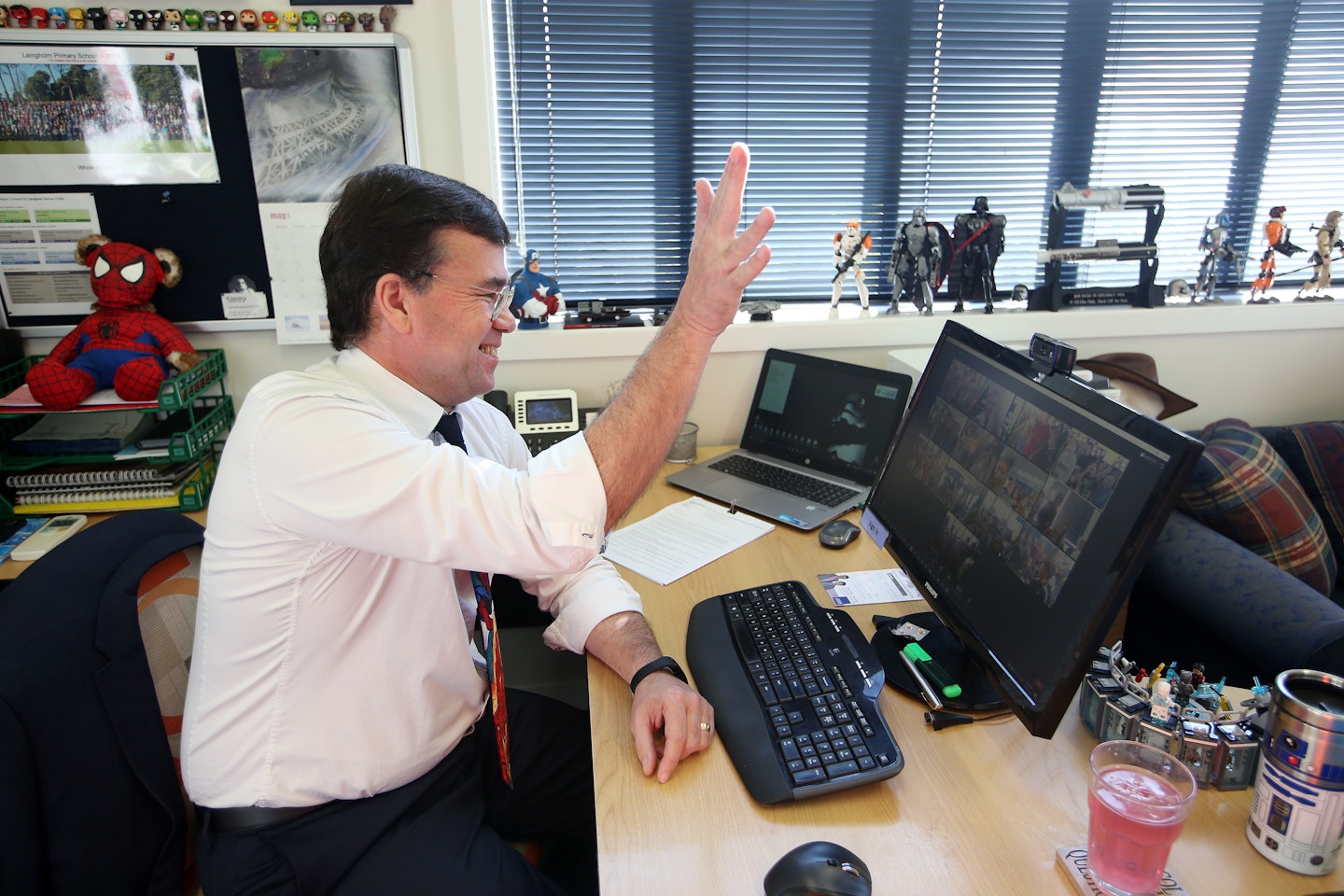 7 of 47
7 of 47Auckland, New Zealand
Martyn Weatherill, principal of Laingholm Primary School in Auckland, hosts an online assembly with students in their classrooms on the first day back to school on 18 May.
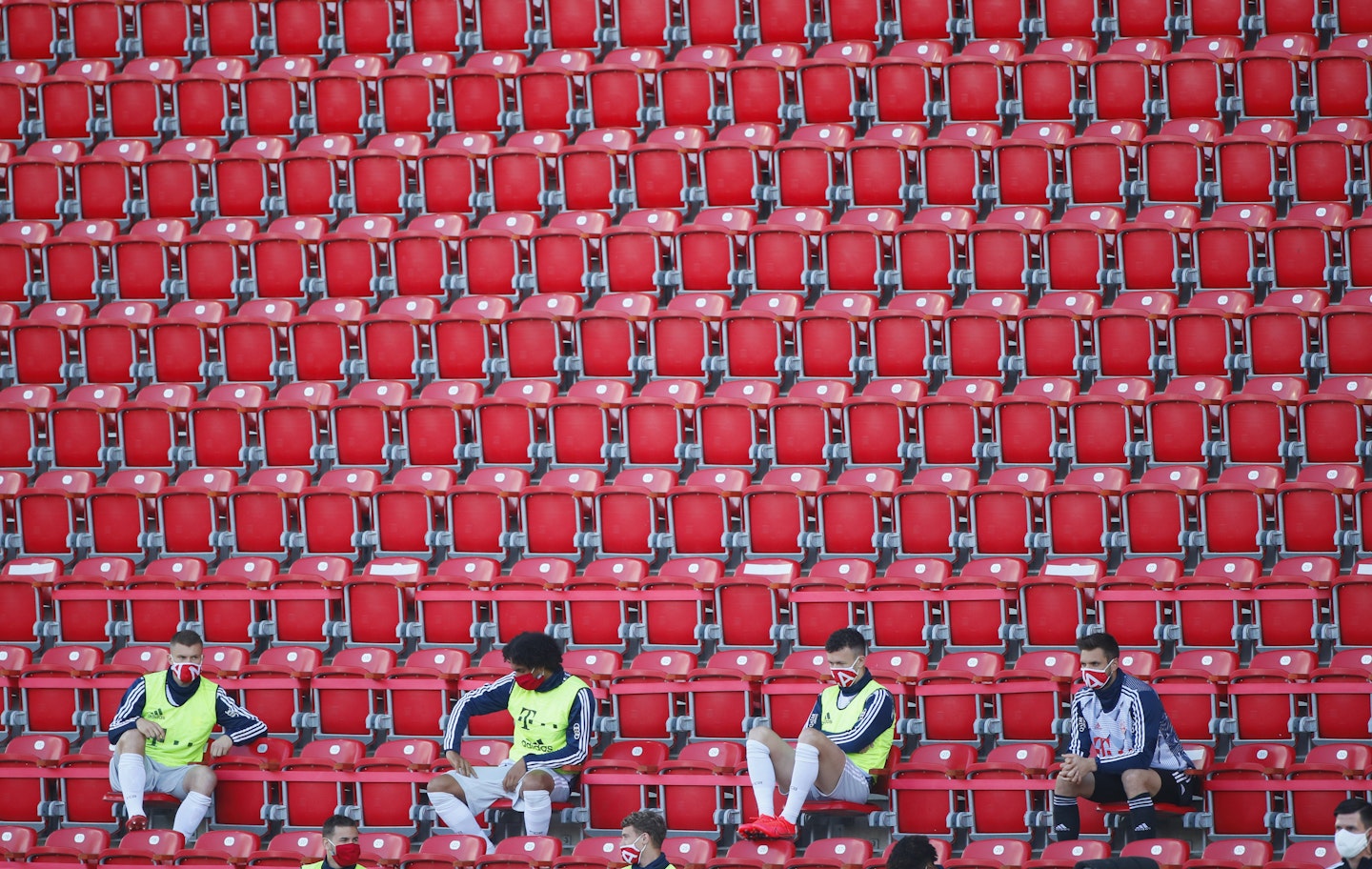 8 of 47
8 of 47Berlin, Germany
Bayern Munich substitutes wear protective face masks and maintain social distance in the stands during the Bundesliga match between 1. FC Union Berlin and FC Bayern Muenchen at Stadion An der Alten Foersterei on 17 May. The Bundesliga and Second Bundesliga is the first professional league to resume the season after the nationwide lockdown; all matches until the end of the season will be played behind closed doors.
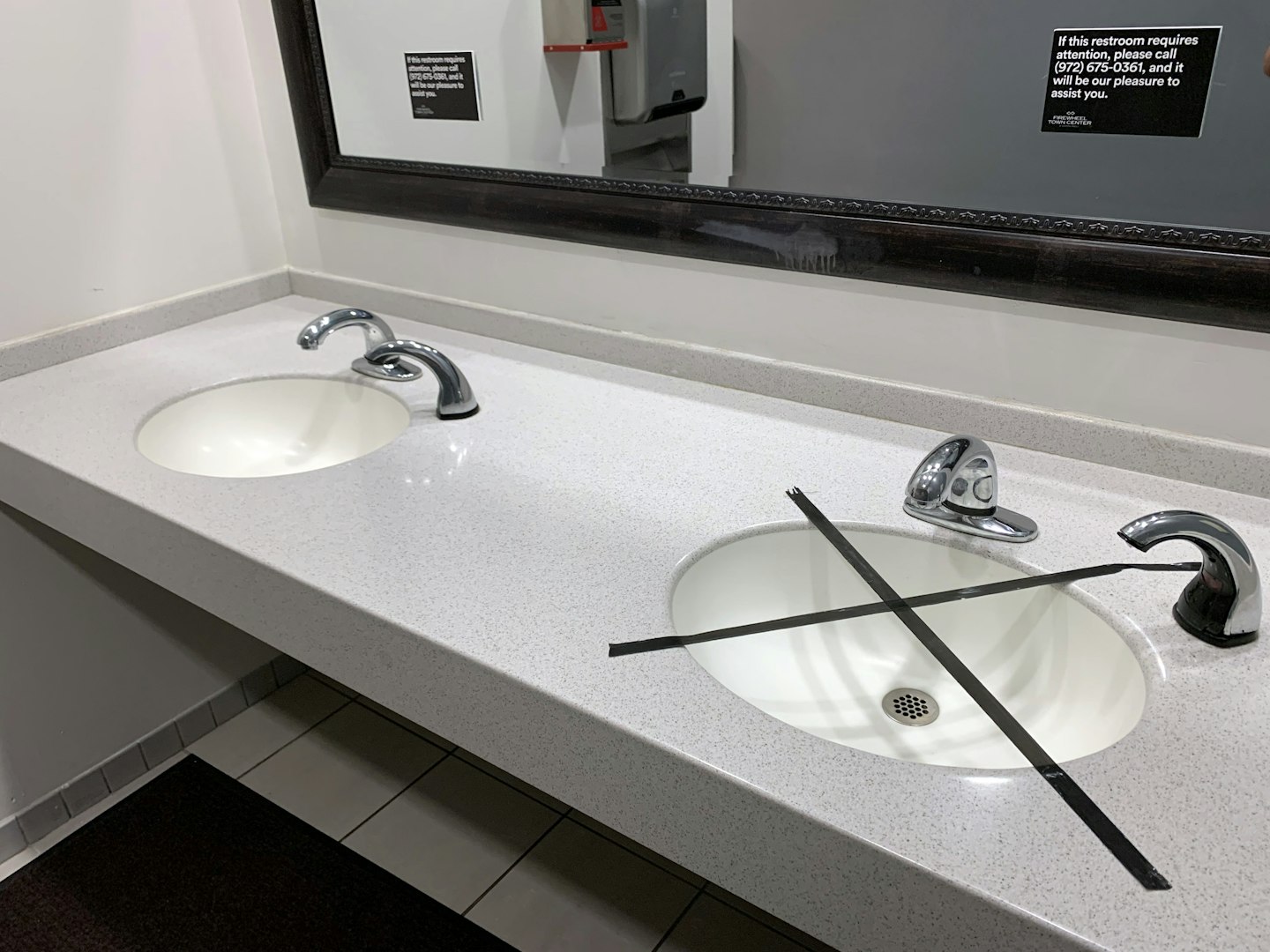 9 of 47
9 of 47Dallas, Texas, USA
A sink in a public toilet is blocked off in an attempt to promote social distancing.
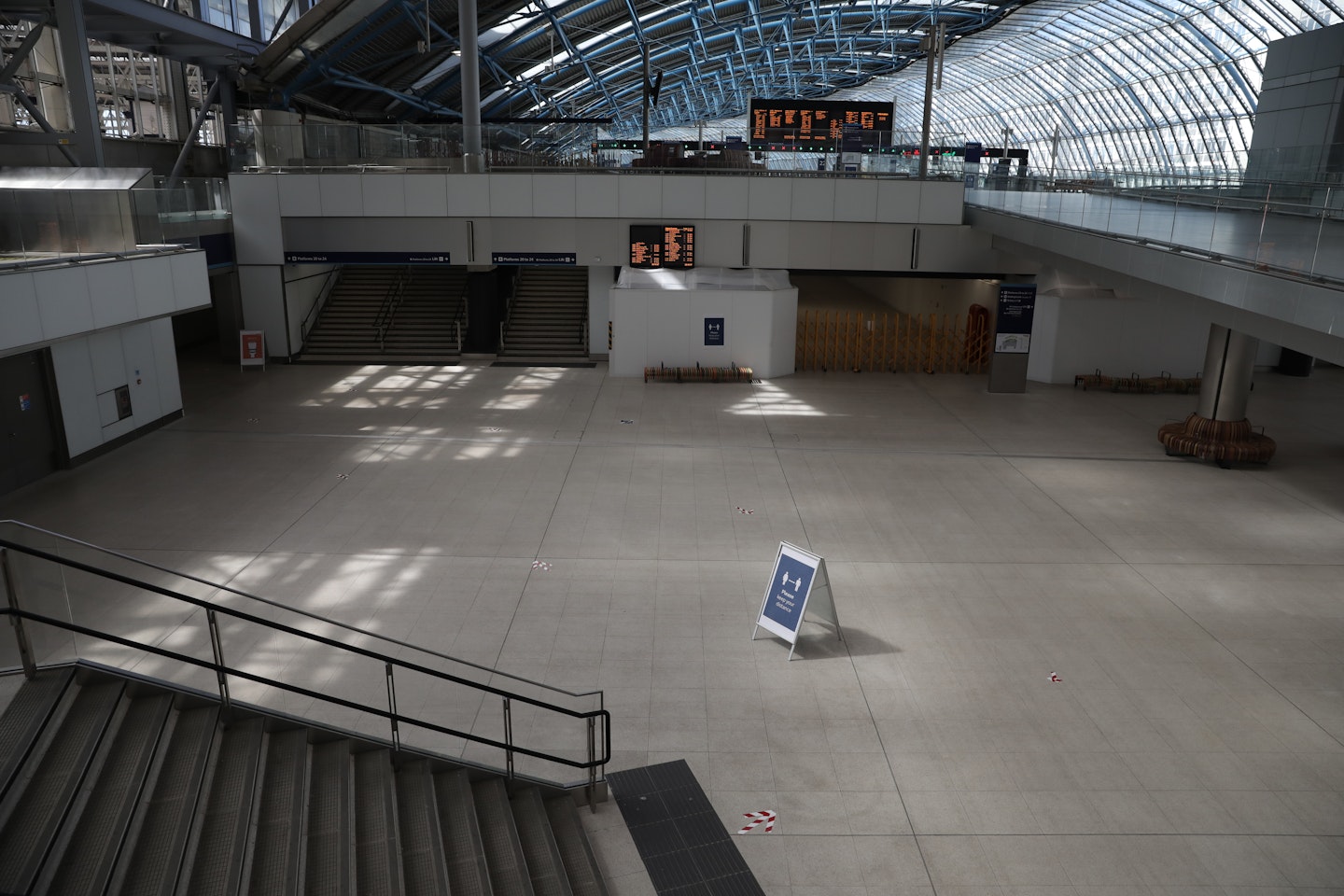 10 of 47
10 of 47London, UK
An empty Waterloo station shows a sign encouraging social distancing on 18 May.
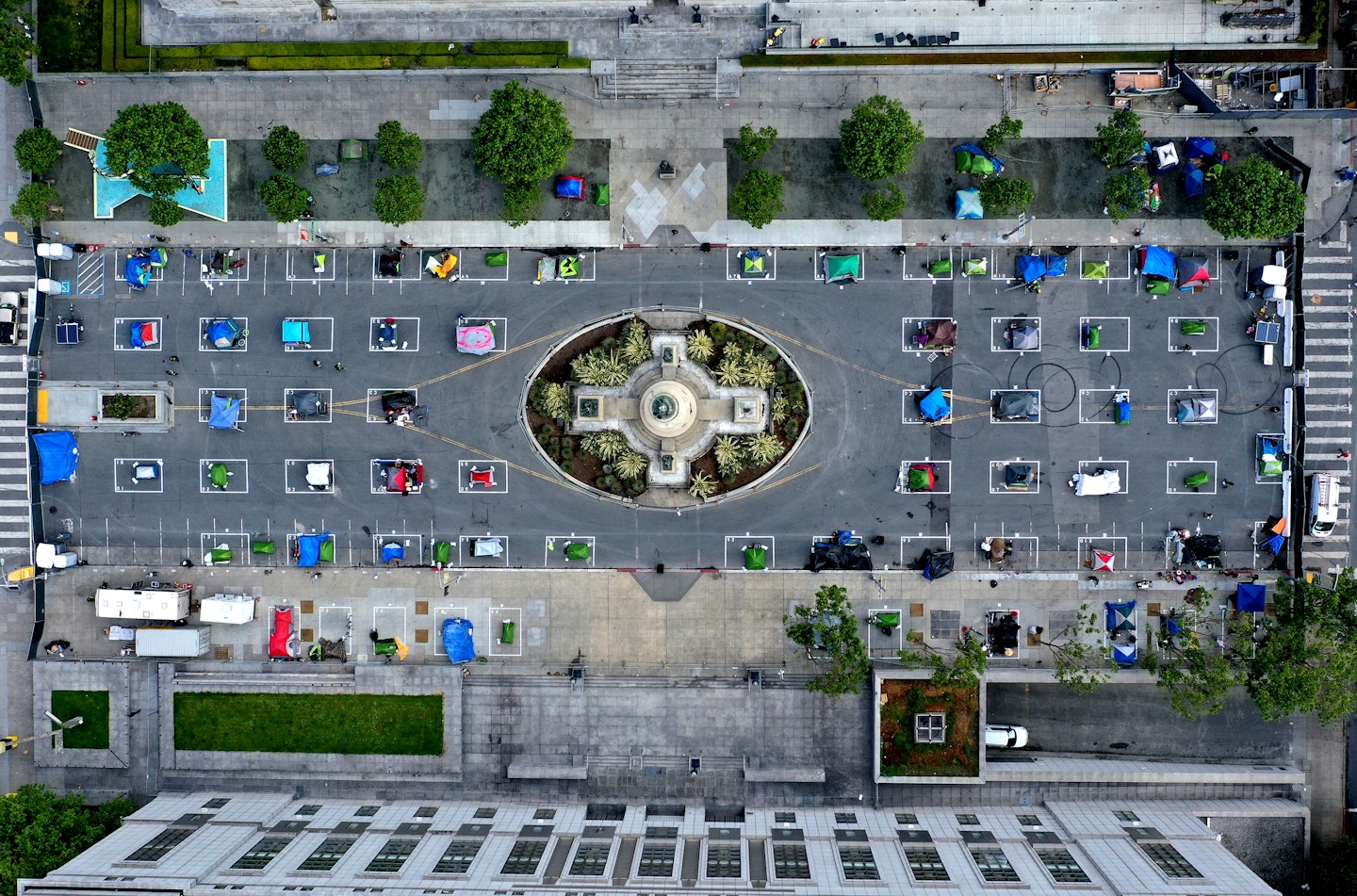 11 of 47
11 of 47San Francisco, California, USA
A temporary tent encampment for the homeless with tents at an acceptable distance from each other is opened in San Francisco.
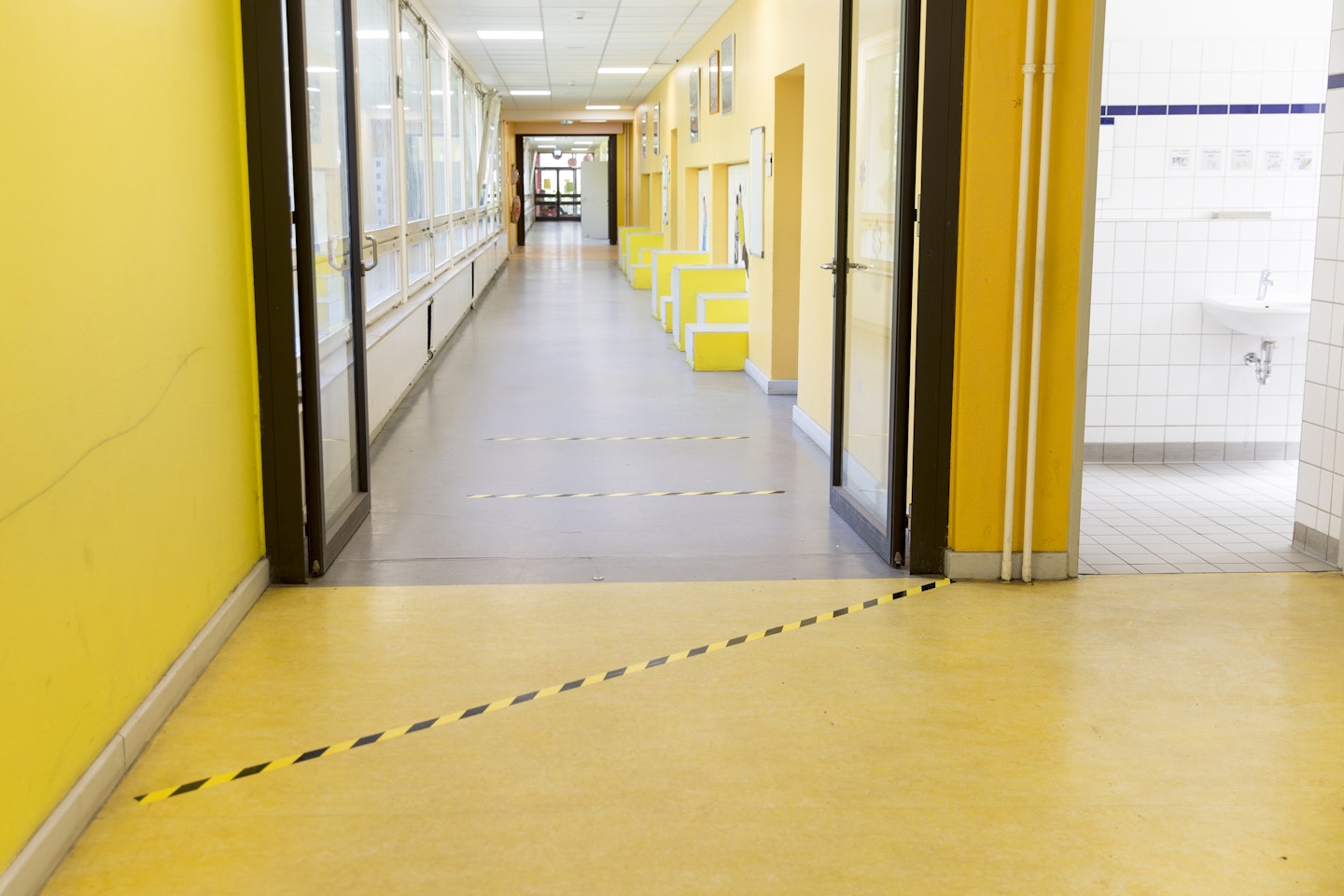 12 of 47
12 of 47Berlin, Germany
Markings are placed on the floor at a primary school in Berlin as primary school pupils and tenth graders began returning to school.
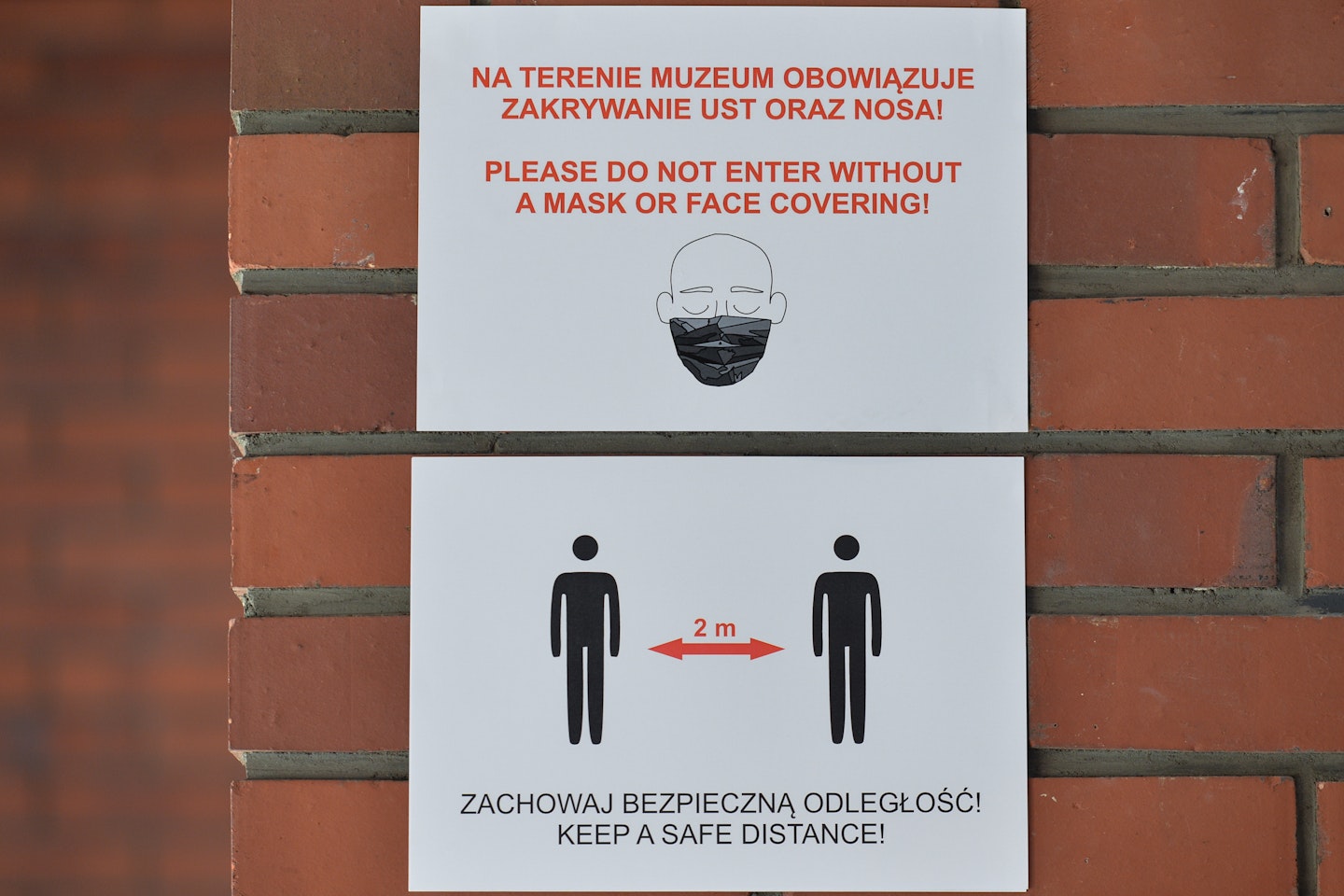 13 of 47
13 of 47Krakow, Poland
A sign at the entrance to the Manggha Museum of Japanese Art and Technology in Krakow reads, 'Do Not Enter Without A Mask' and 'Keep A Safe Distance.'
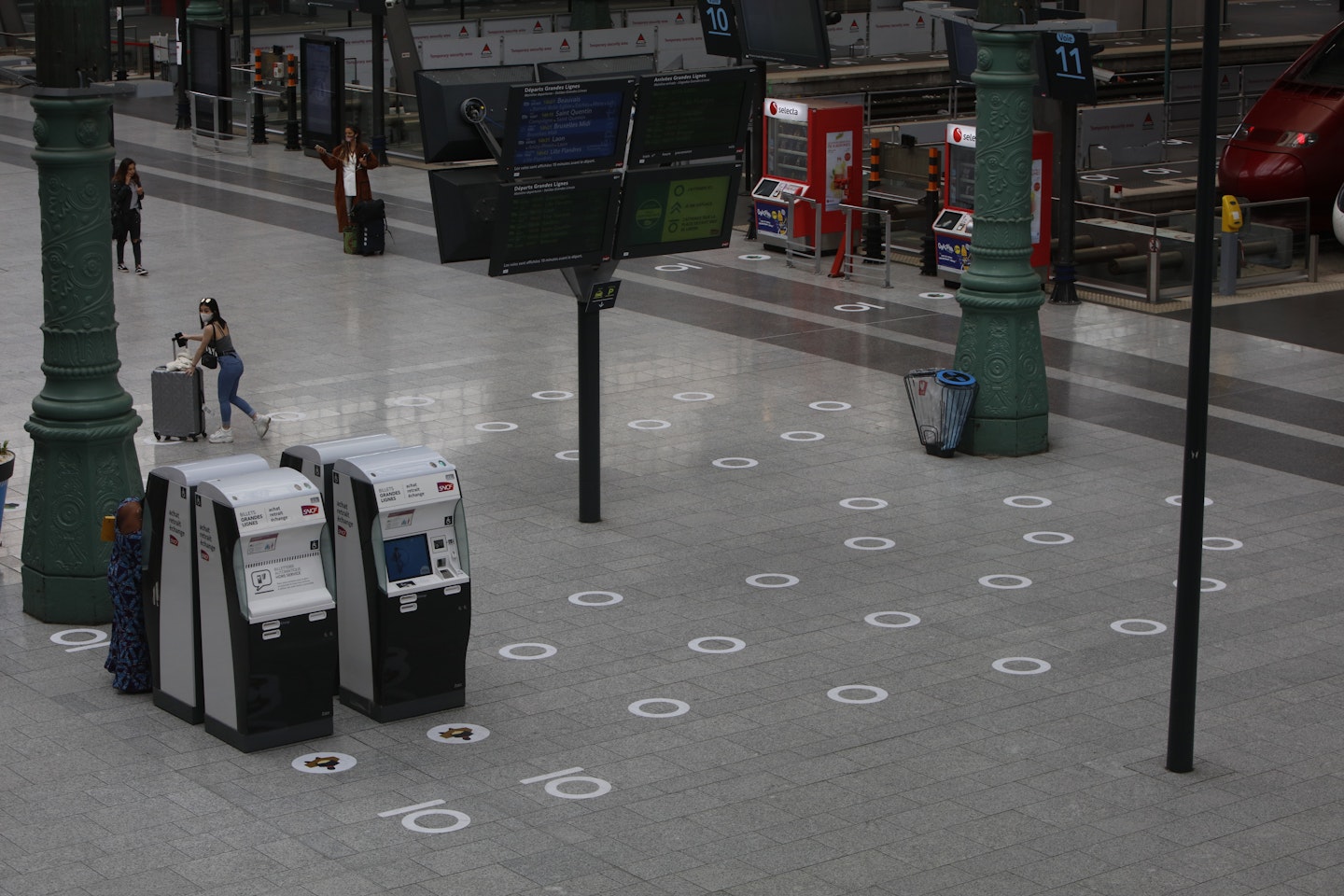 14 of 47
14 of 47Paris, France
Gare de nord station in Paris has marks on the ground to show the appropriate social distance between people.
 15 of 47
15 of 47Granada, Spain
A zebra crossing sports a sign that recommends keeping two meters away from other people on the first day that Granada begins Phase 1 of progressive return to normal life on 18 May.
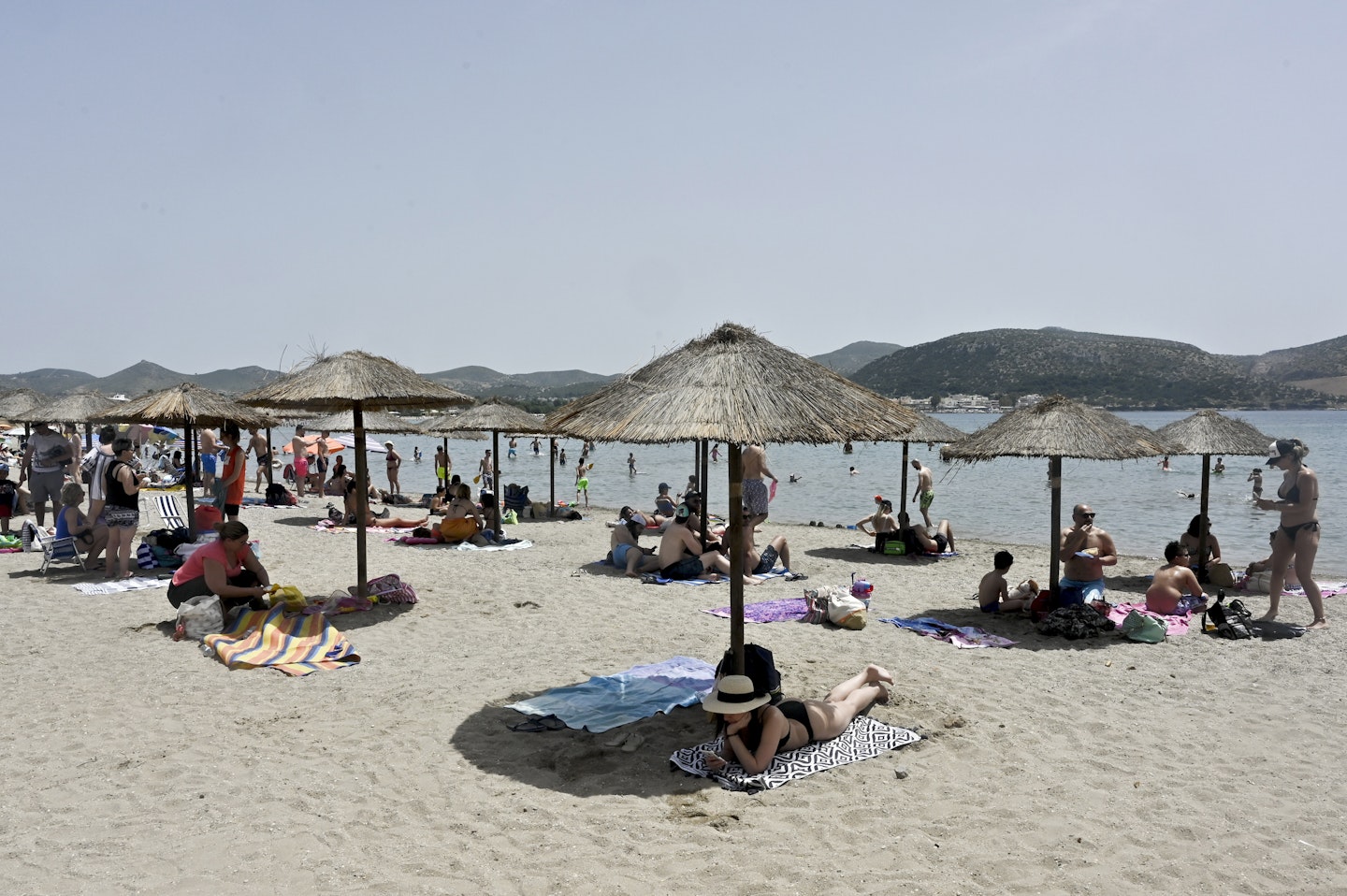 16 of 47
16 of 47Alimos, Greece
Beachgoers enjoy the sun and sand at Anavisos beach on 16 May as organised beaches are allowed to be reopened in Greece.
 17 of 47
17 of 47Innsbruck, Austria
Hairdressers wash customer's hair on 2 May 2020 in Innsbruck, Austria after hair salons and barber shops reopen after a seven-week lockdown. Customers and employees must wear masks and have to keep as much distance as possible.
 18 of 47
18 of 47Tel Aviv, Israel
A young girl wearing a mask plays on the playground during the first day of school on 5 May 2020 after over a month and a half that schools were closed.
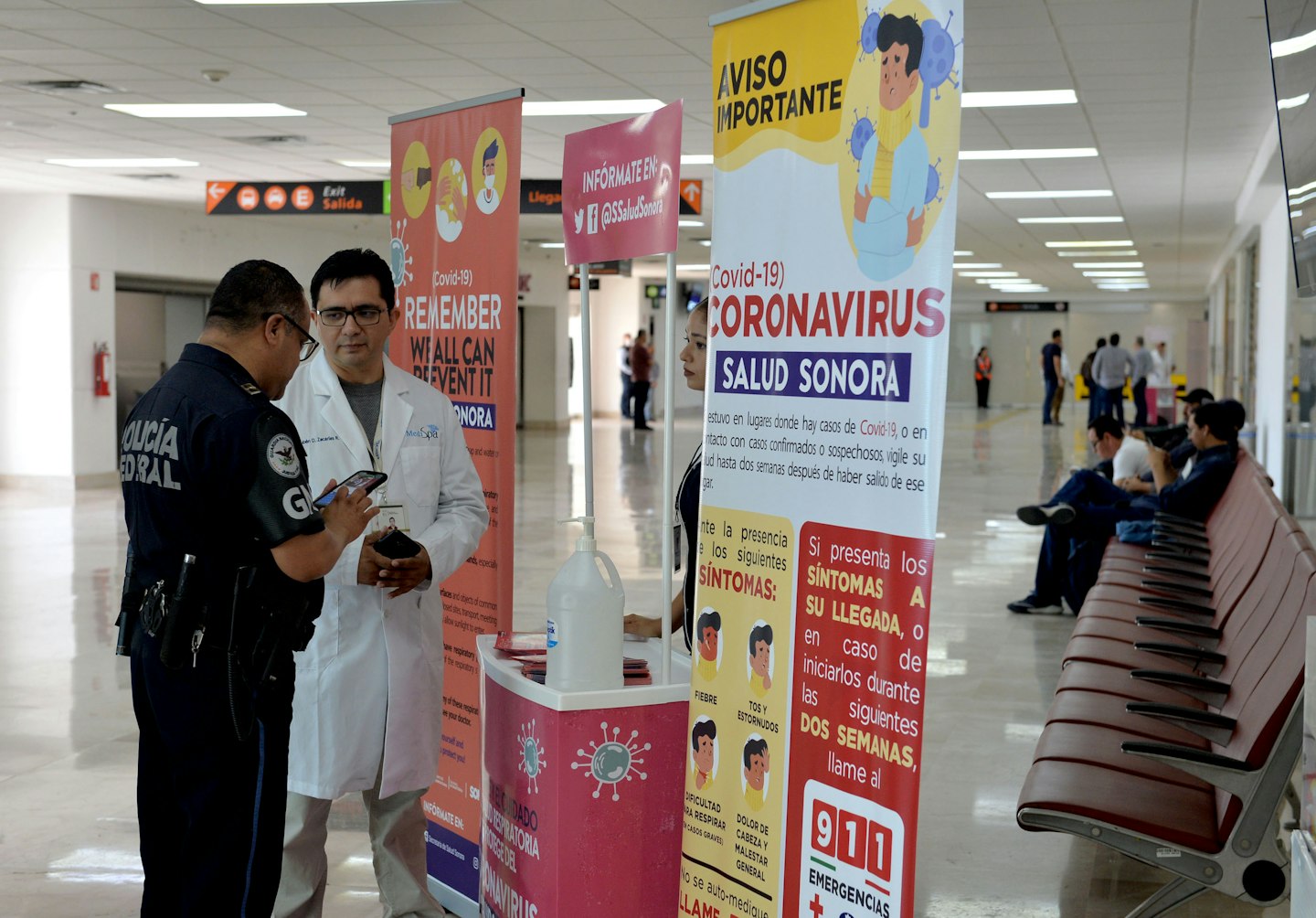 19 of 47
19 of 47Hermosillo, Mexico
A doctor from the state health sector speaks to a federal police officer who is supervising the information to prevent contagion amid the COVID-19 pandemic at Hermosillo International Airport on 2 May 2020. Hermosillo International Airport is operating normally while taking preventive measures to curb the spread of COVID-19.
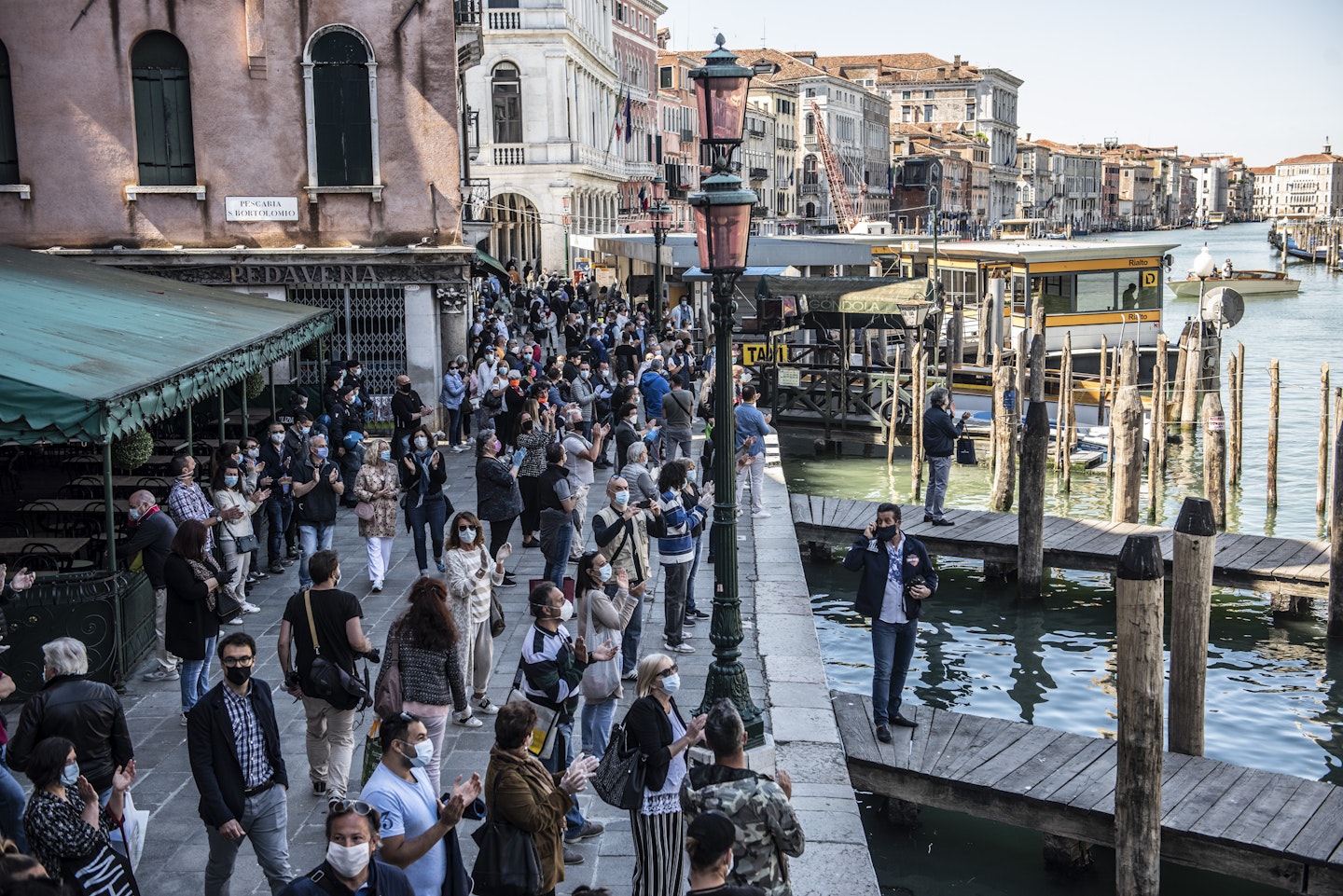 20 of 47
20 of 47Venice, Italy
Demonstrators in Venice asks for the restrictions around bars, restaurants and other commercial activities be lifted on 4 May 2020.
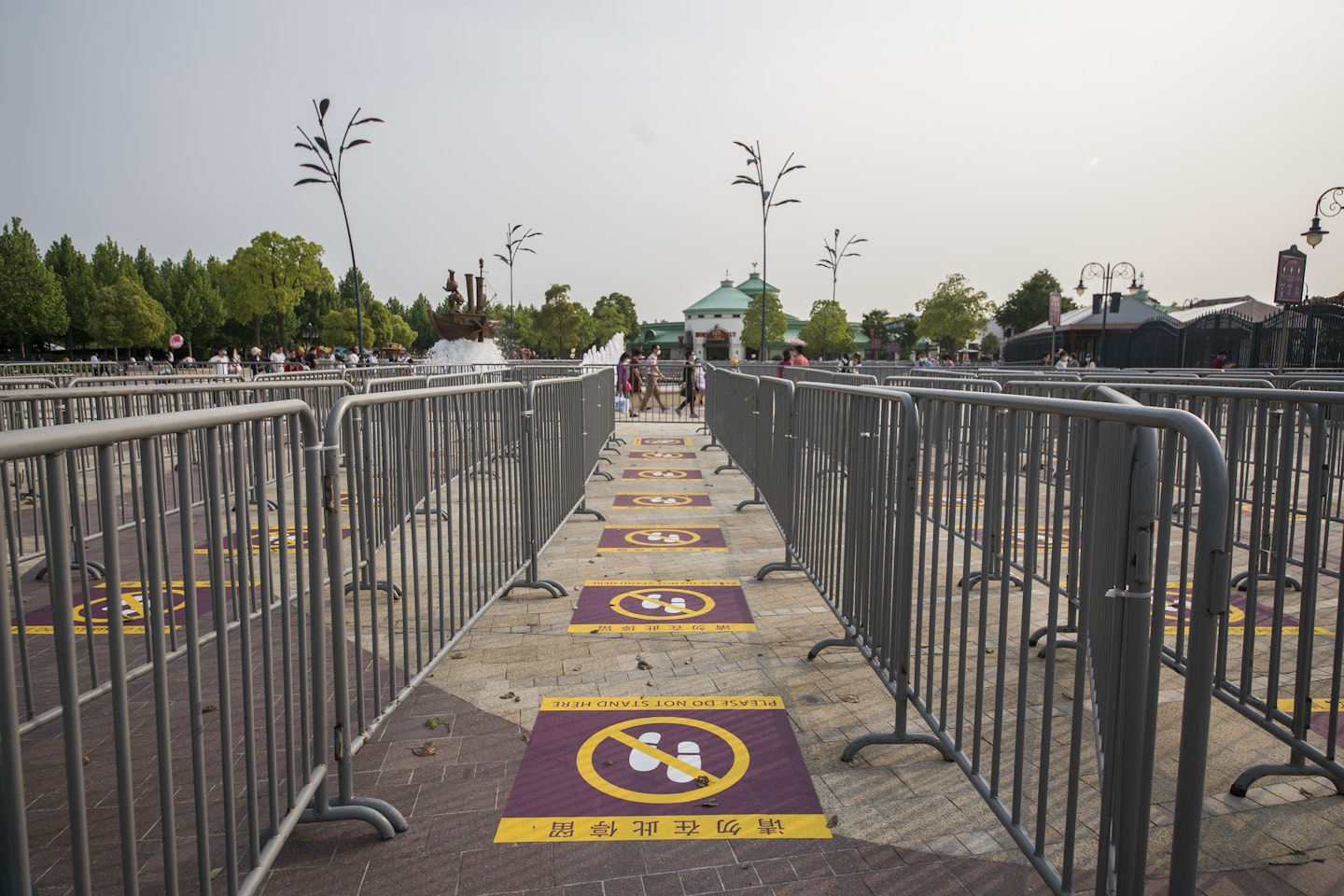 21 of 47
21 of 47Shanghai, China
Shanghai Disneyland utilises 'social Distancing' queues for its reopening on 4 May 2020.
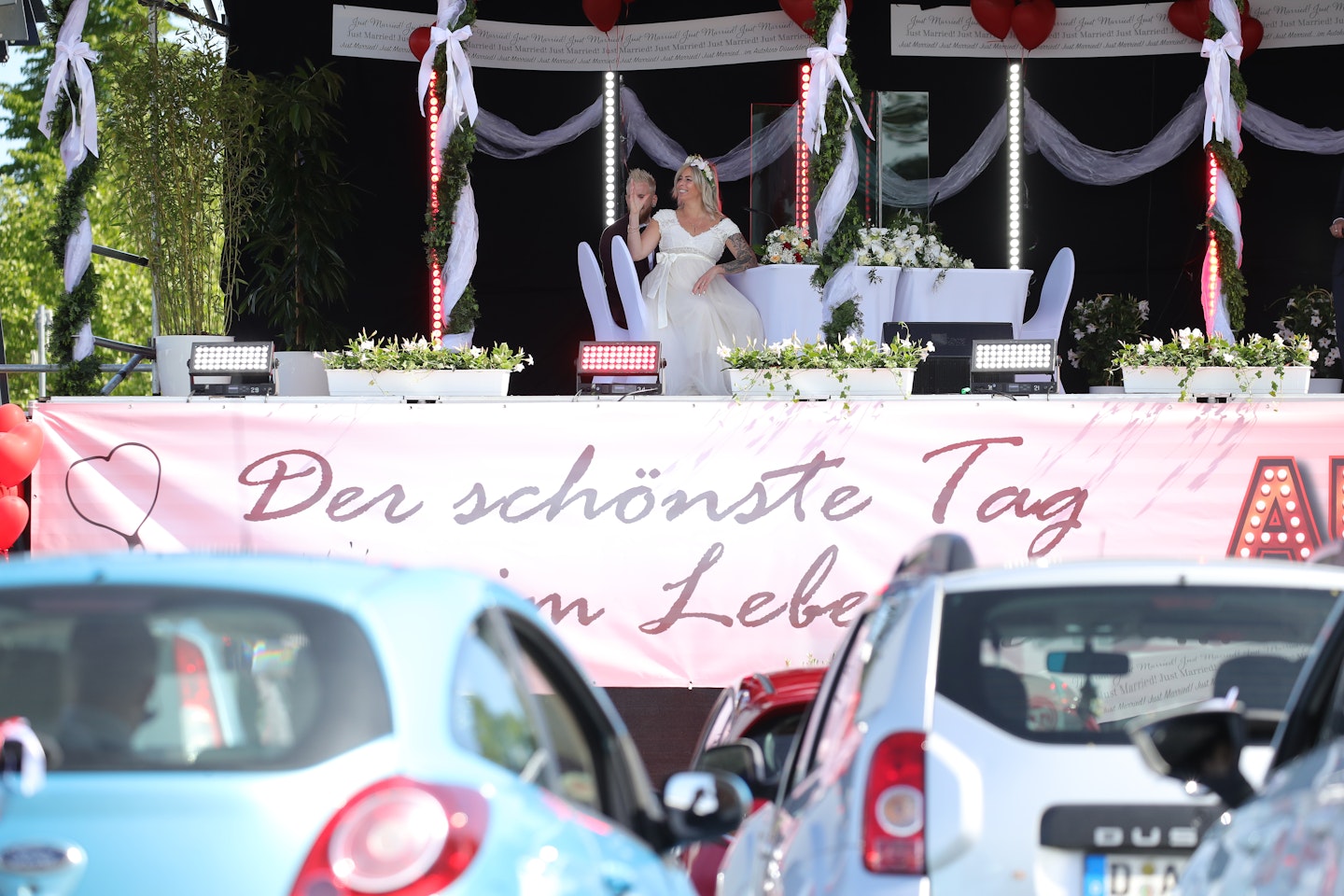 22 of 47
22 of 47Dusseldorf, Germany
Janine Scholz and Philip Scholz are married in a wedding ceremony at the Autokino Dusseldorf drive-in cinema on 5 May 2020. A total of three couples are marrying at the drive-in with friends and family members allowed to attend in their cars.
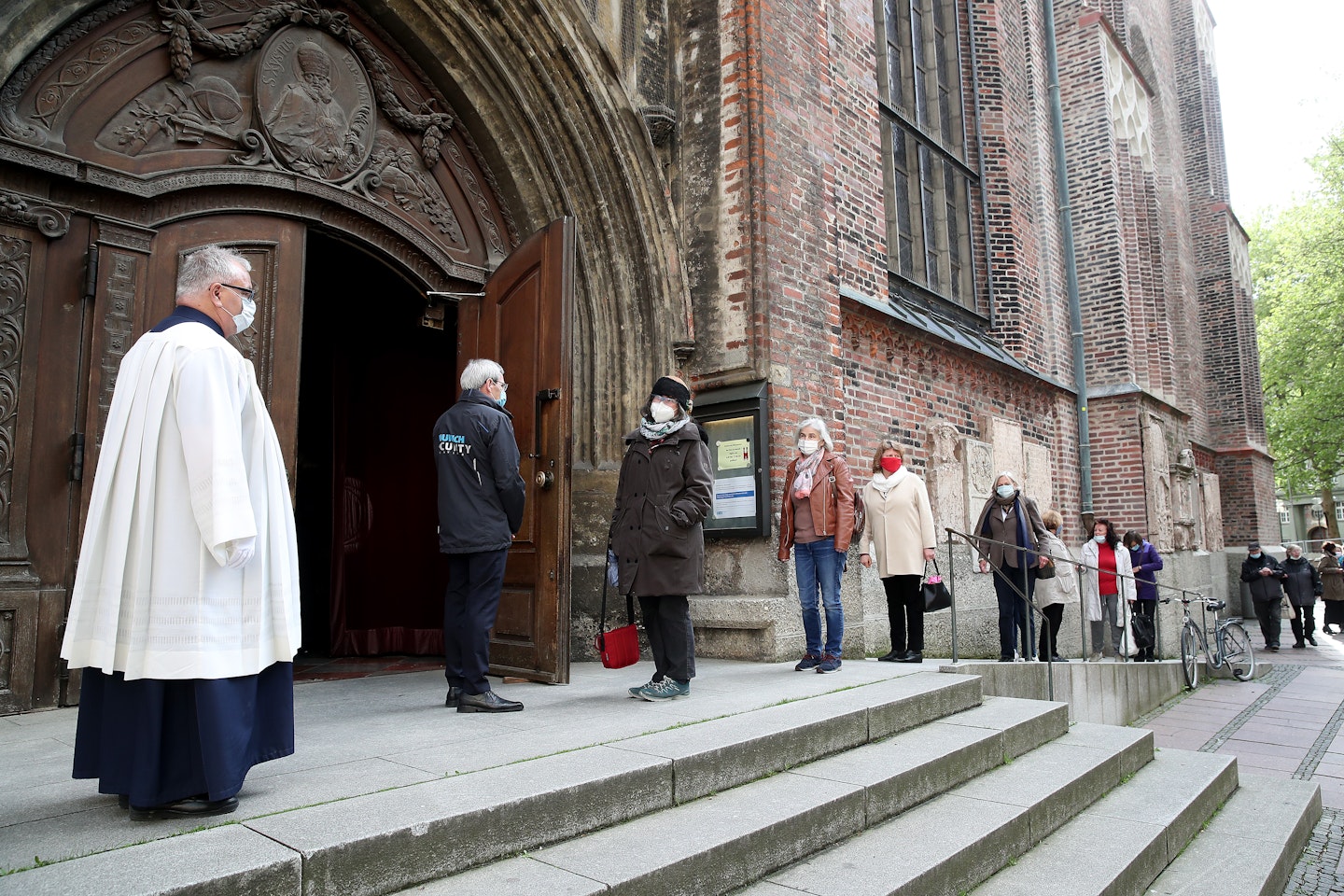 23 of 47
23 of 47Munich, Germany
Churchgoers arrive Frauenkirche 'Cathedral of Our Lady' cathedral for evening mass on the first day churches and other houses of worship are allowed to hold services again in Bavaria since March on 4 May 2020.
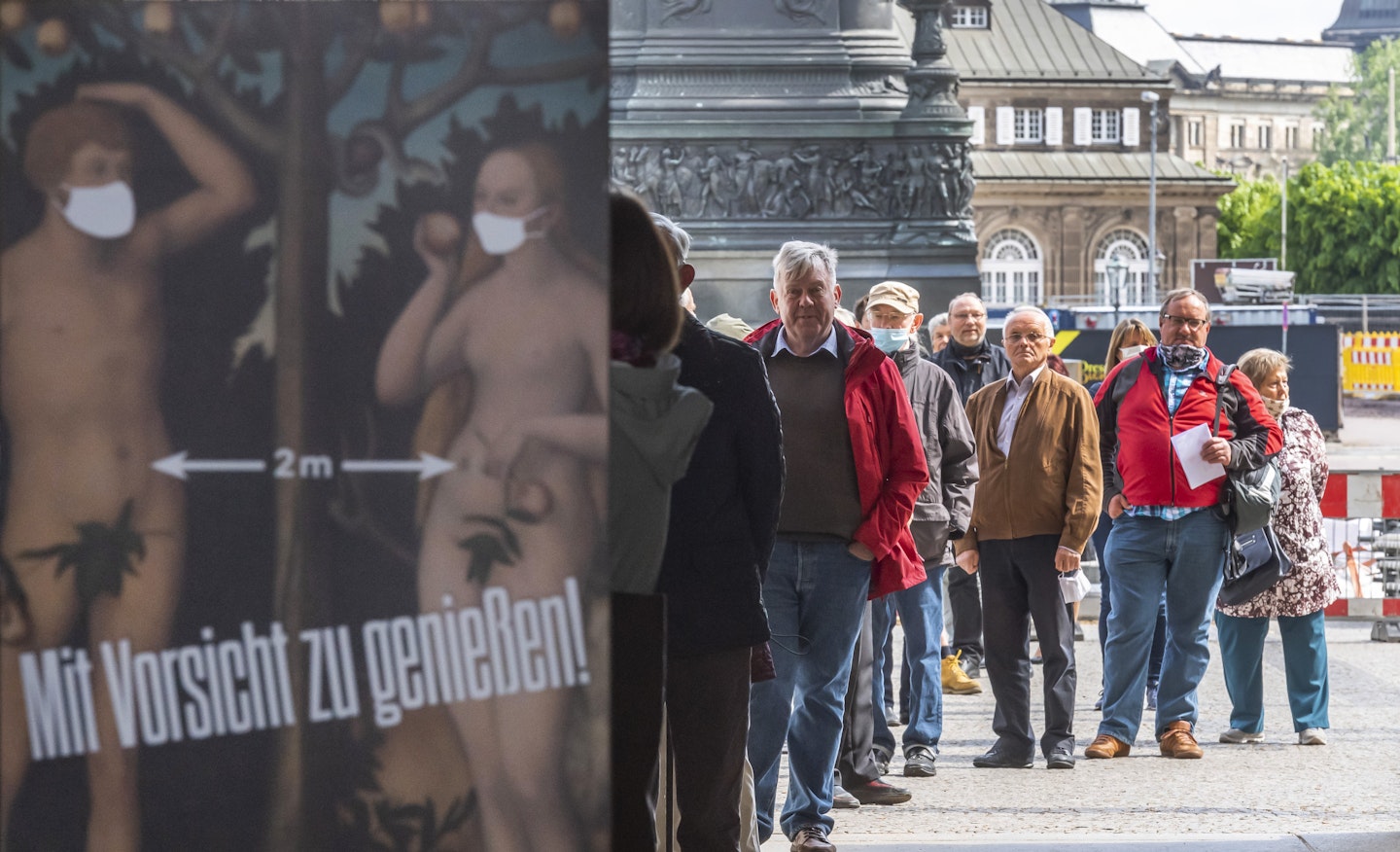 24 of 47
24 of 47Dresden, Germany
Visitors, only some of whom are wearing face masks, wait to enter the Zwinger palace complex as a poster showing Adam and Eve wearing masks hangs at the entrance on the first day the palace reopened to the public.
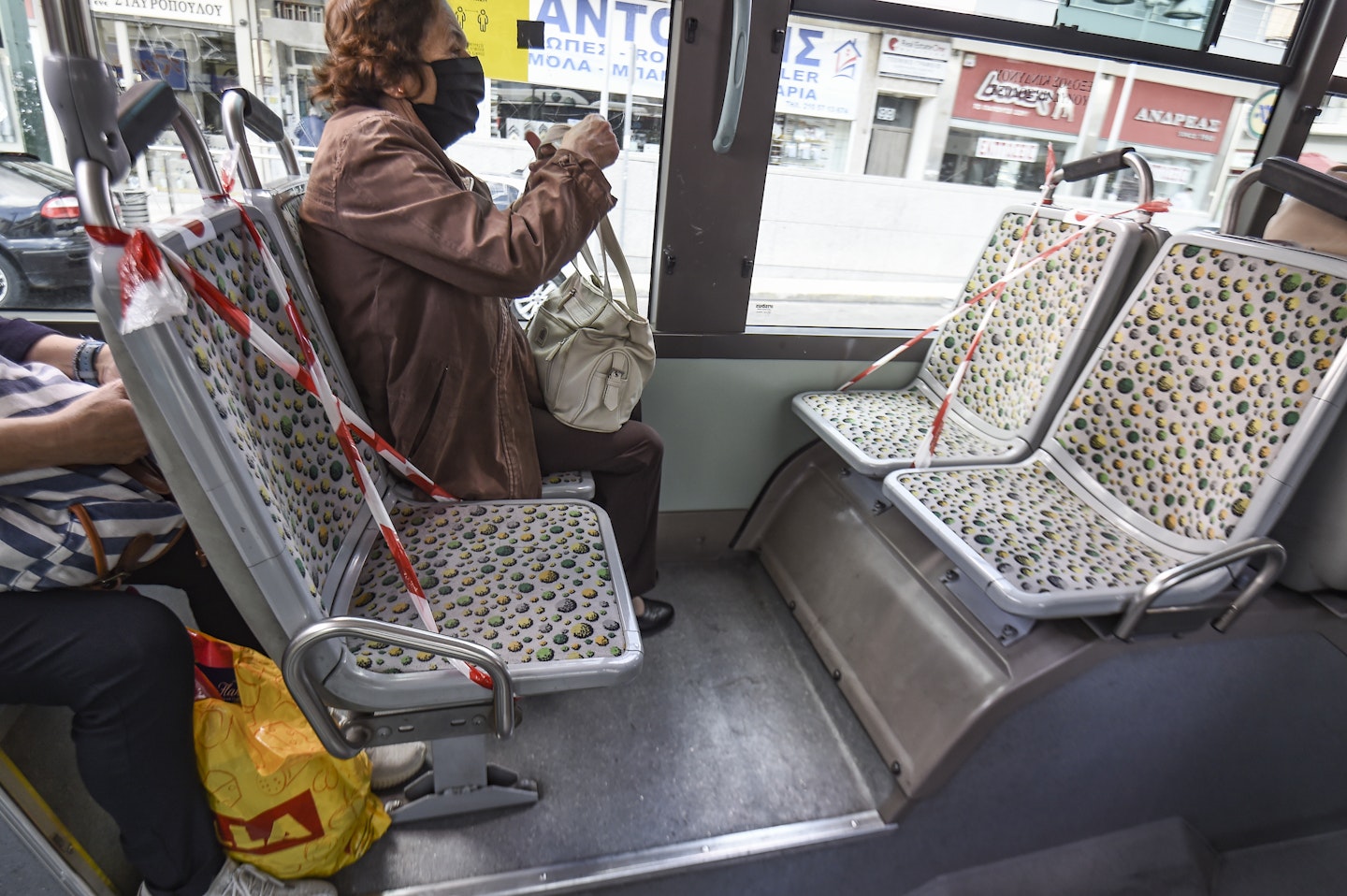 25 of 47
25 of 47Athens, Greece
A commuters, wearing protective face masks, sits on a bus on 4 May 2020.
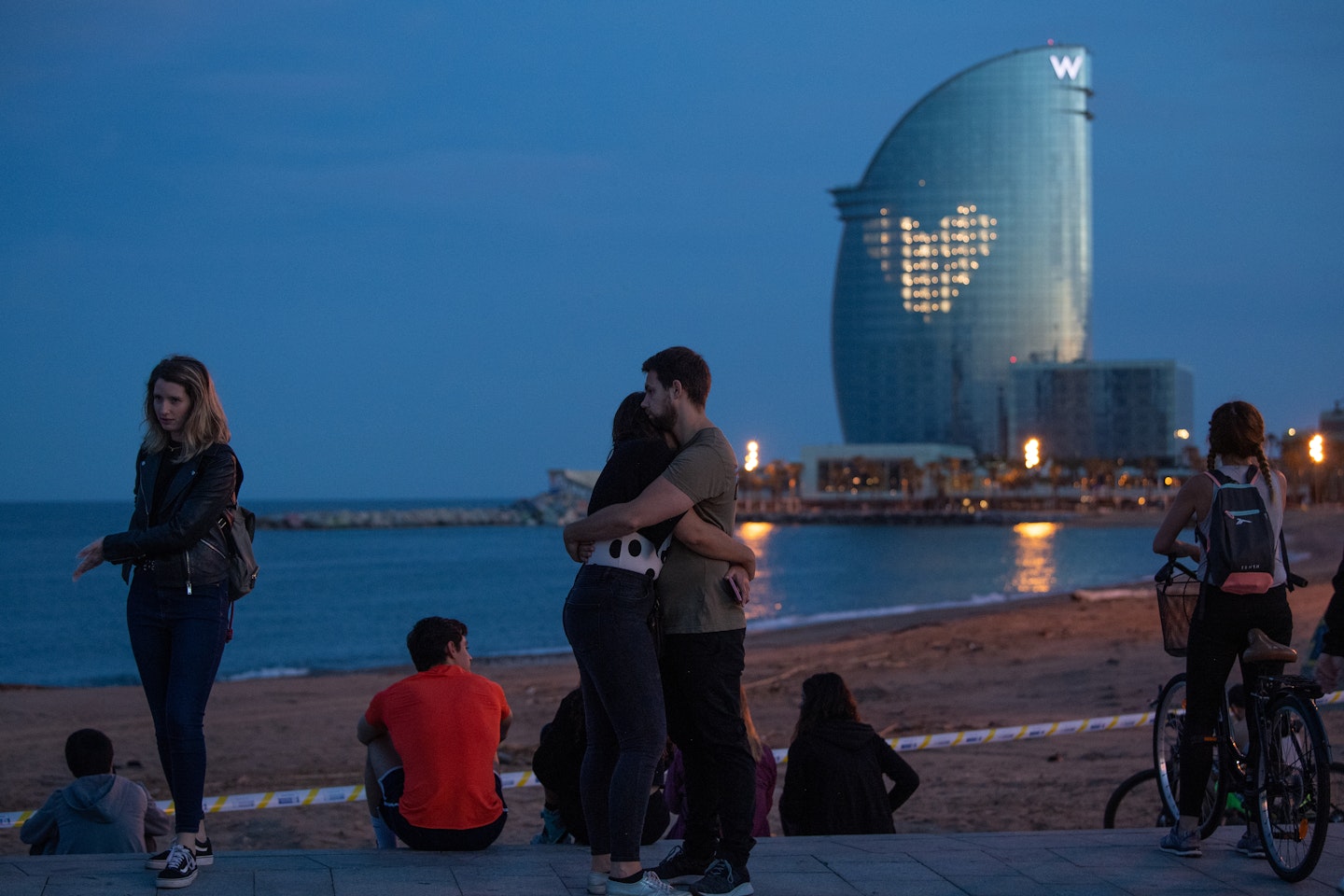 26 of 47
26 of 47Barcelona, Spain
People watch the sunset at La Barceloneta Beach on 2 May 2020. In Spain, lockdown measures have continued to ease and walking with family members and outdoor exercise is now permitted from 6-10am and from 8-11pm.
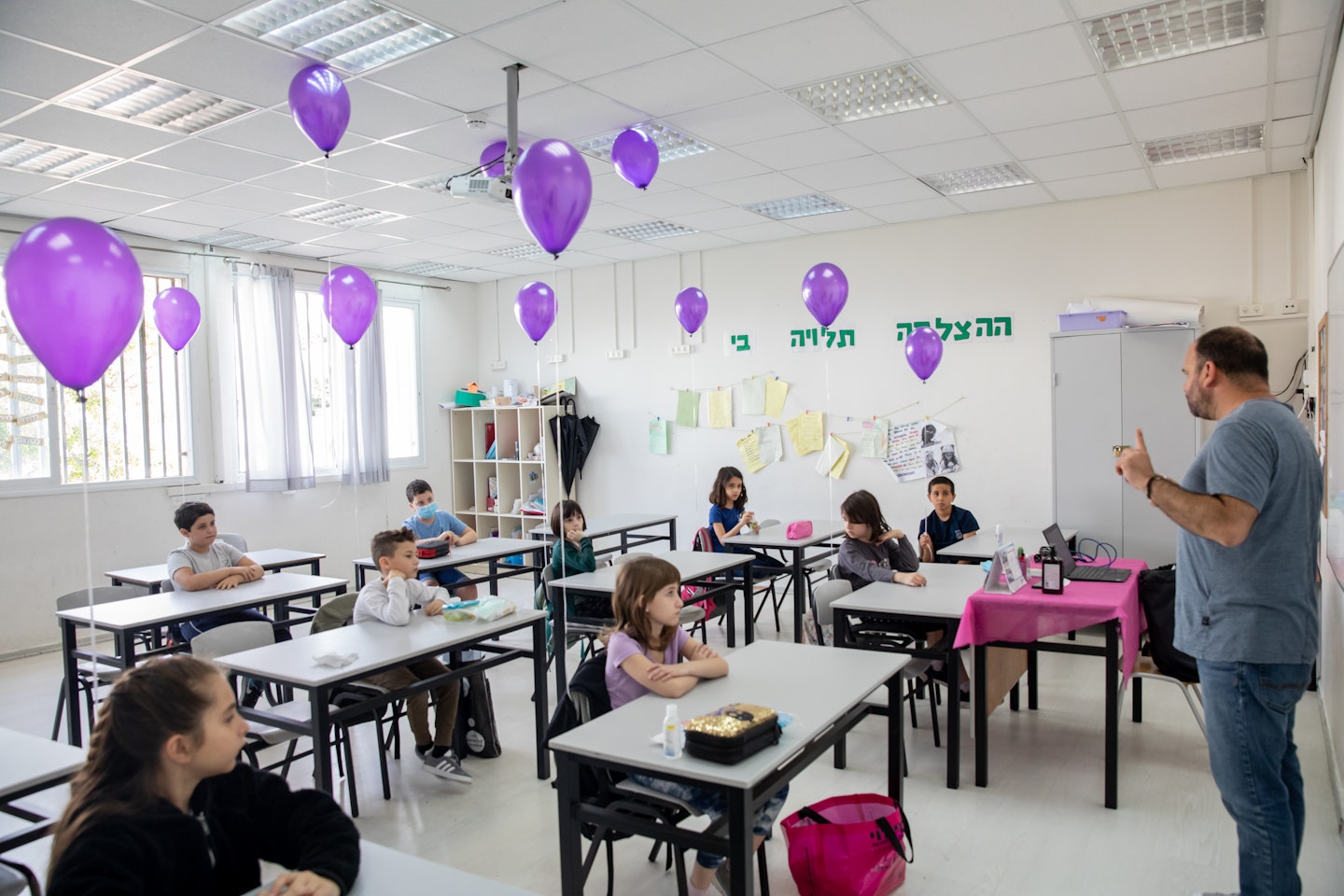 27 of 47
27 of 47Tel Aviv, Isreal
Year 3 children return to school for the fist time in over a month and a half on 5 May 2020 in Tel Aviv, Israel.
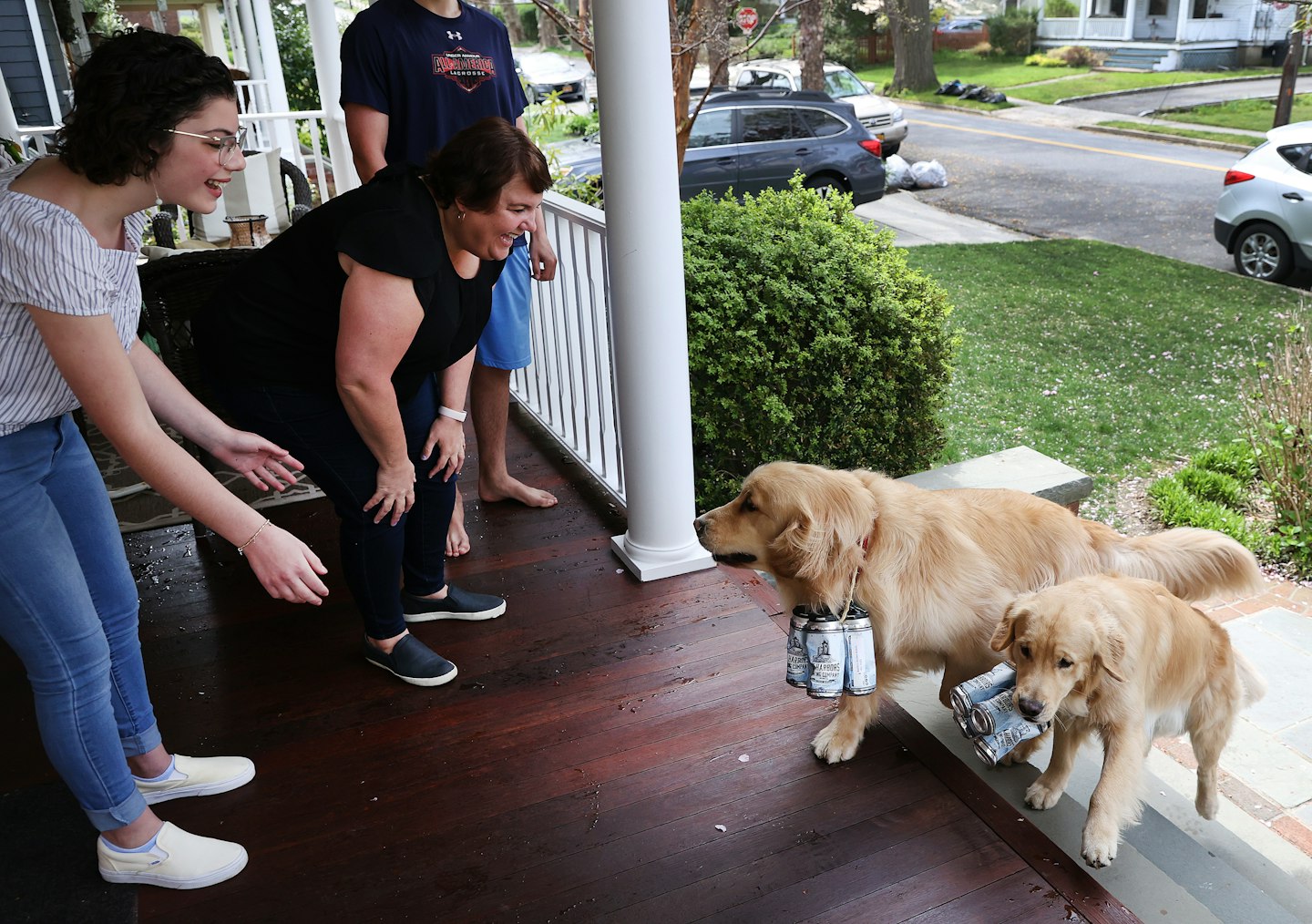 28 of 47
28 of 47Huntington Village, New York, USA
A family receives a delivery of beer from the Six Harbors Brewery, who have trained their two golden retrievers, Buddy and Barley, to deliver beer to customers during the pandemic.
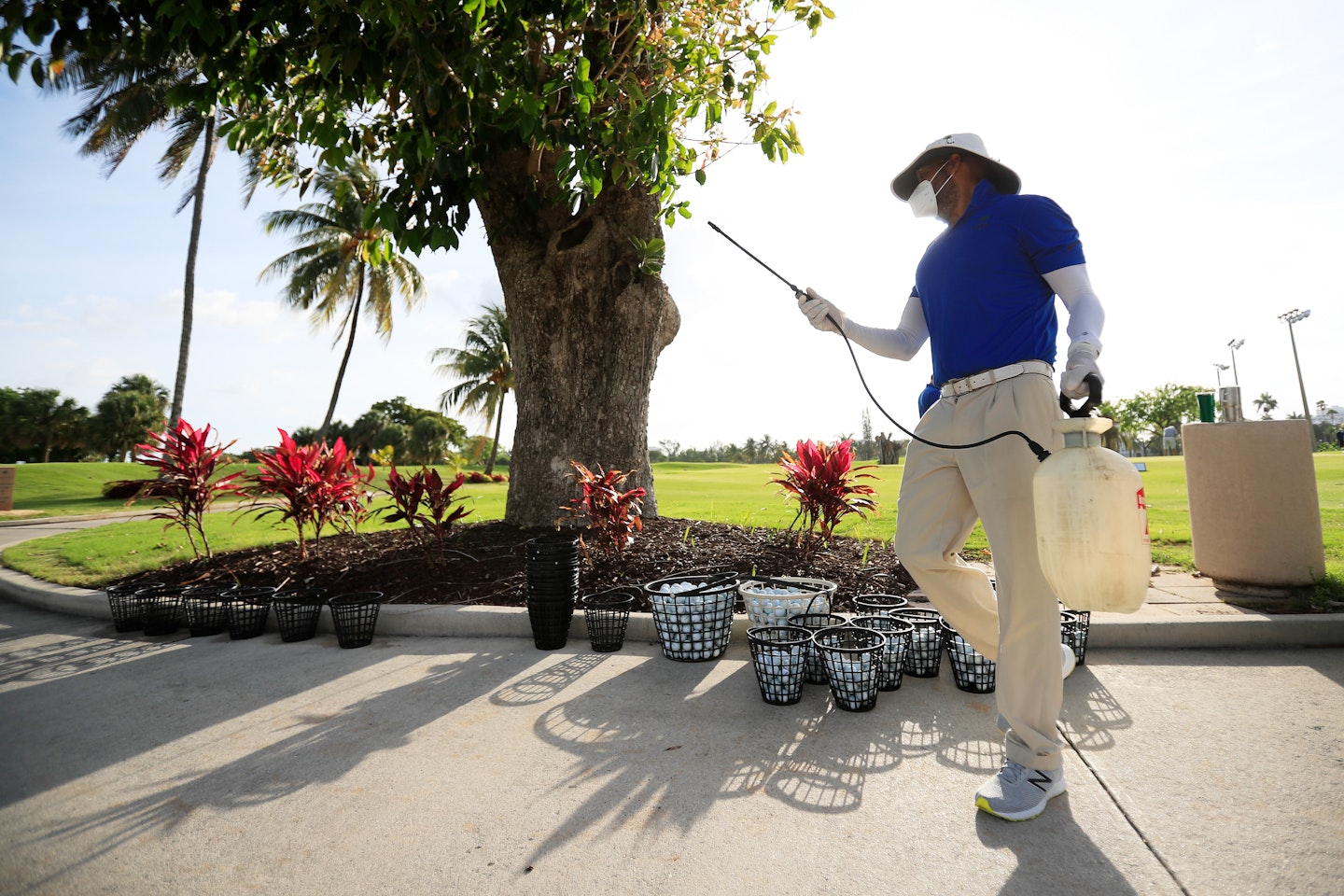 29 of 47
29 of 47Miami, Florida
Jose Morales sanitizes buckets of golf balls at the Miami Beach Golf Club on 29 April 2020 as the city of Miami Beach partially reopens parks and facilities including golf courses, tennis courts and marinas.
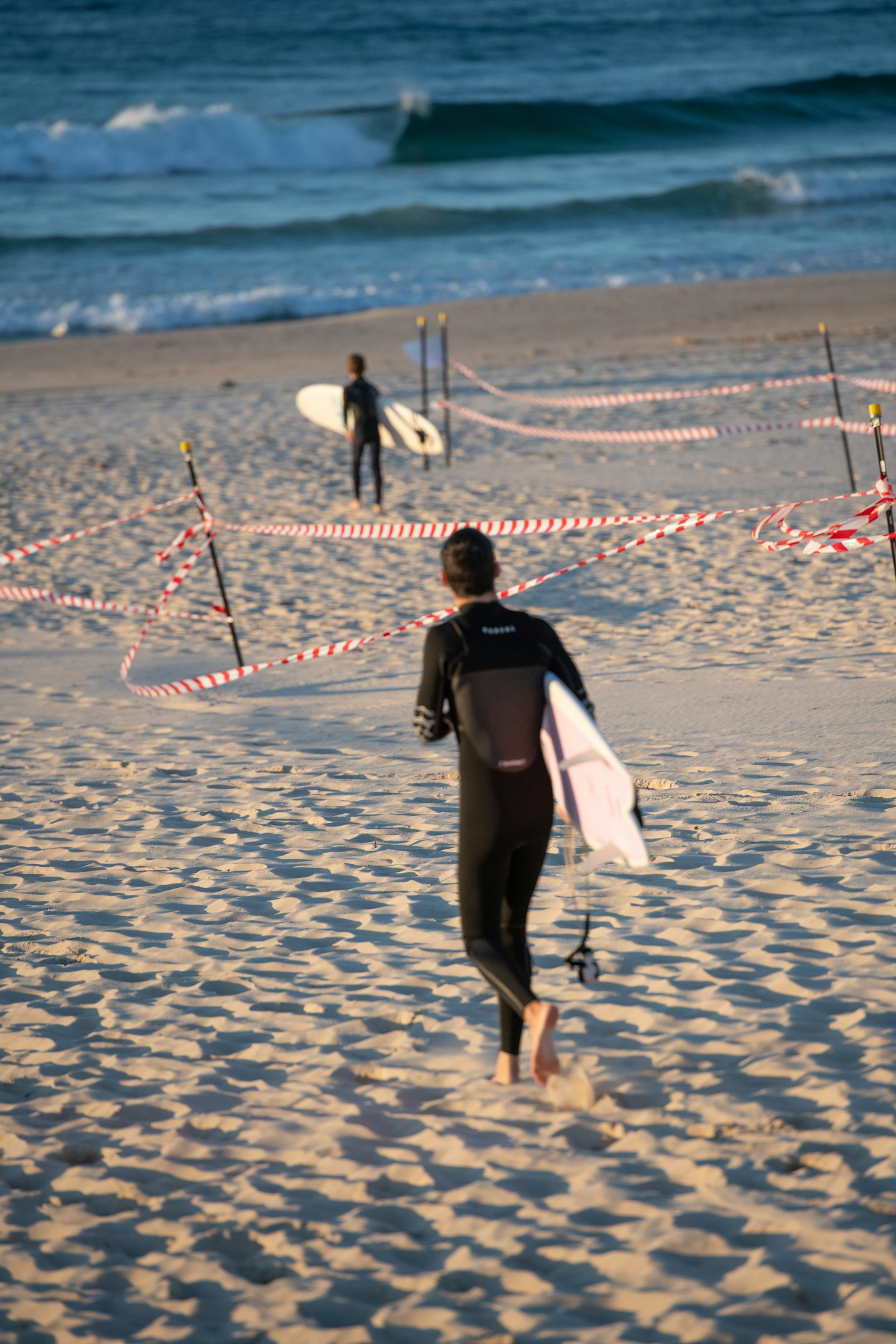 30 of 47
30 of 47Sydney, Australia
Surfers prepare to enter the water at Bondi Beach on 3 May 2020. Currently, 'Surf & Go' measures are in place for weekends and there is no beach access allowed except along designated pathways to the water for surfcraft use only.
 31 of 47
31 of 47Wuhan, China
People wear protective masks while practicing dance near the Yangtze River 1 May 2020 as life returns to normal in Wuhan, China.
 32 of 47
32 of 47Las Vegas, Nevada, USA
Prototype clear acrylic safety shield dividers are tested at a blackjack table at the El Cortez Hotel & Casino, which is currently closed as a result of the statewide shutdown.
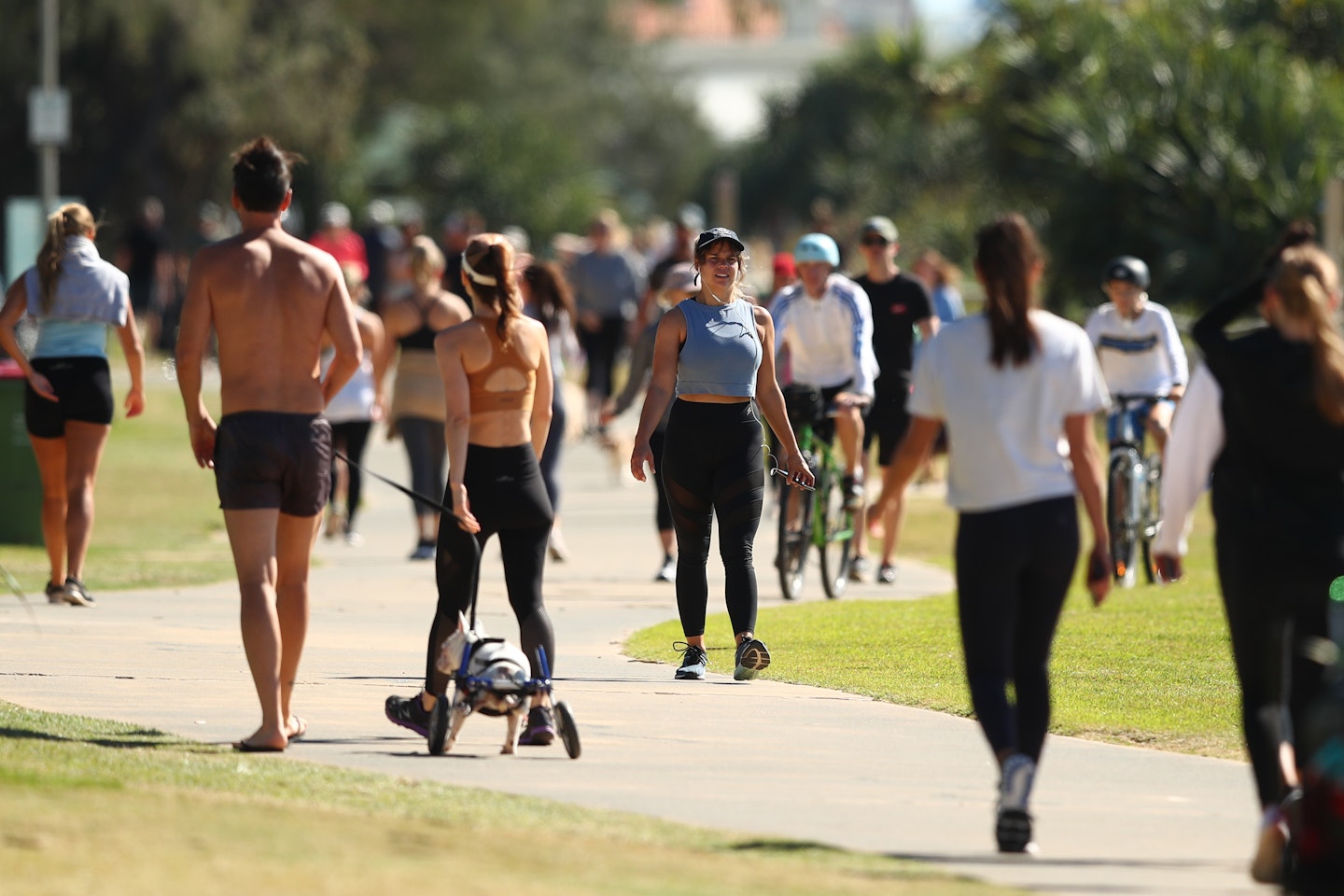 33 of 47
33 of 47Gold Coast, Australia
From 2 May 2020, the Queensland government eased lockdown measures to allow people to leave their homes for recreational activities, such as motorbiking or boating, picnics, visiting national parks or going shopping for non-essential items. Social distancing must still be observed and people must stay within 50km of their main residence.
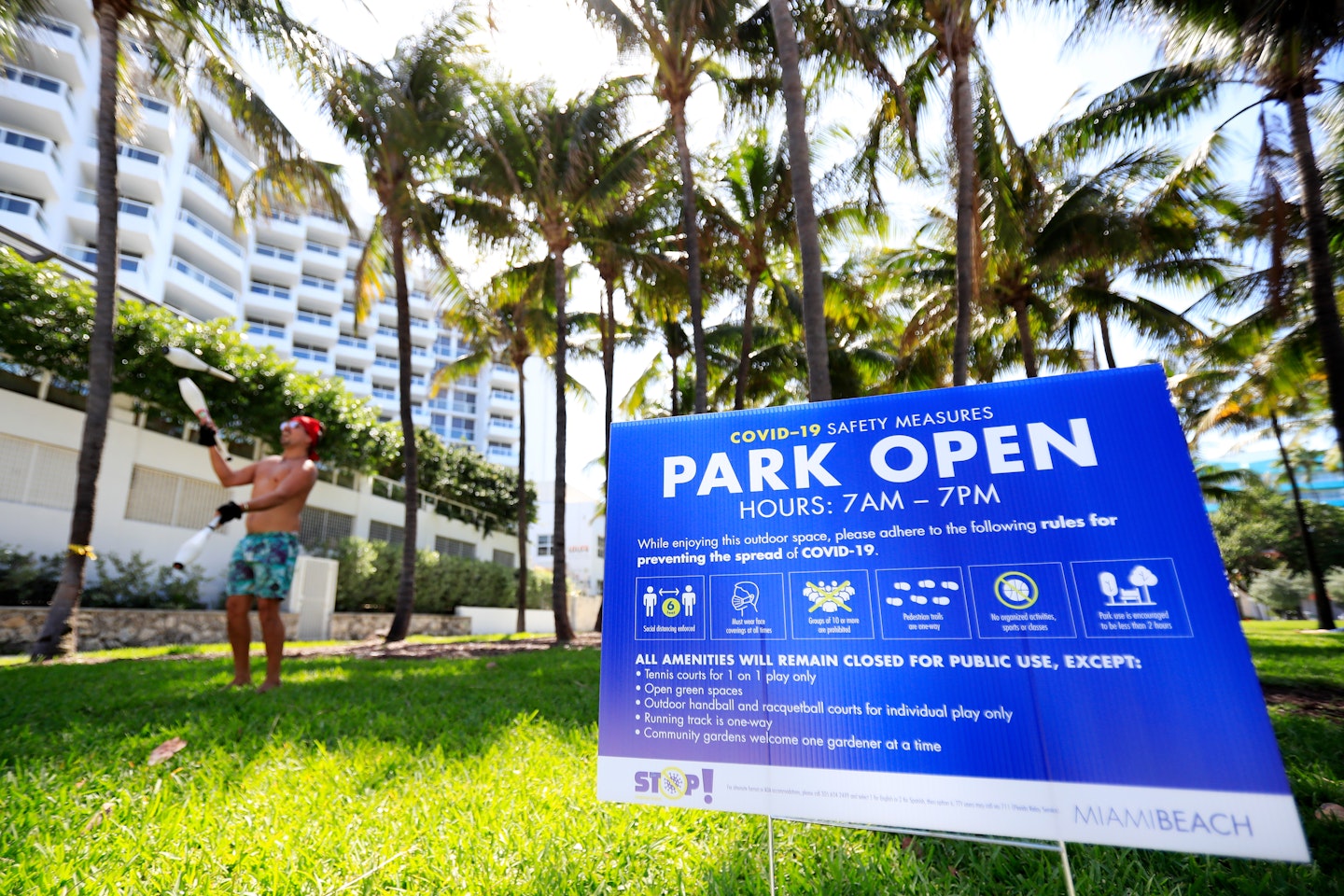 34 of 47
34 of 47Miami Florida
Miami Beach, Florida has partially reopened parks and facilities including golf courses, tennis courts and marinas as it begins easing lockdown restrictions.
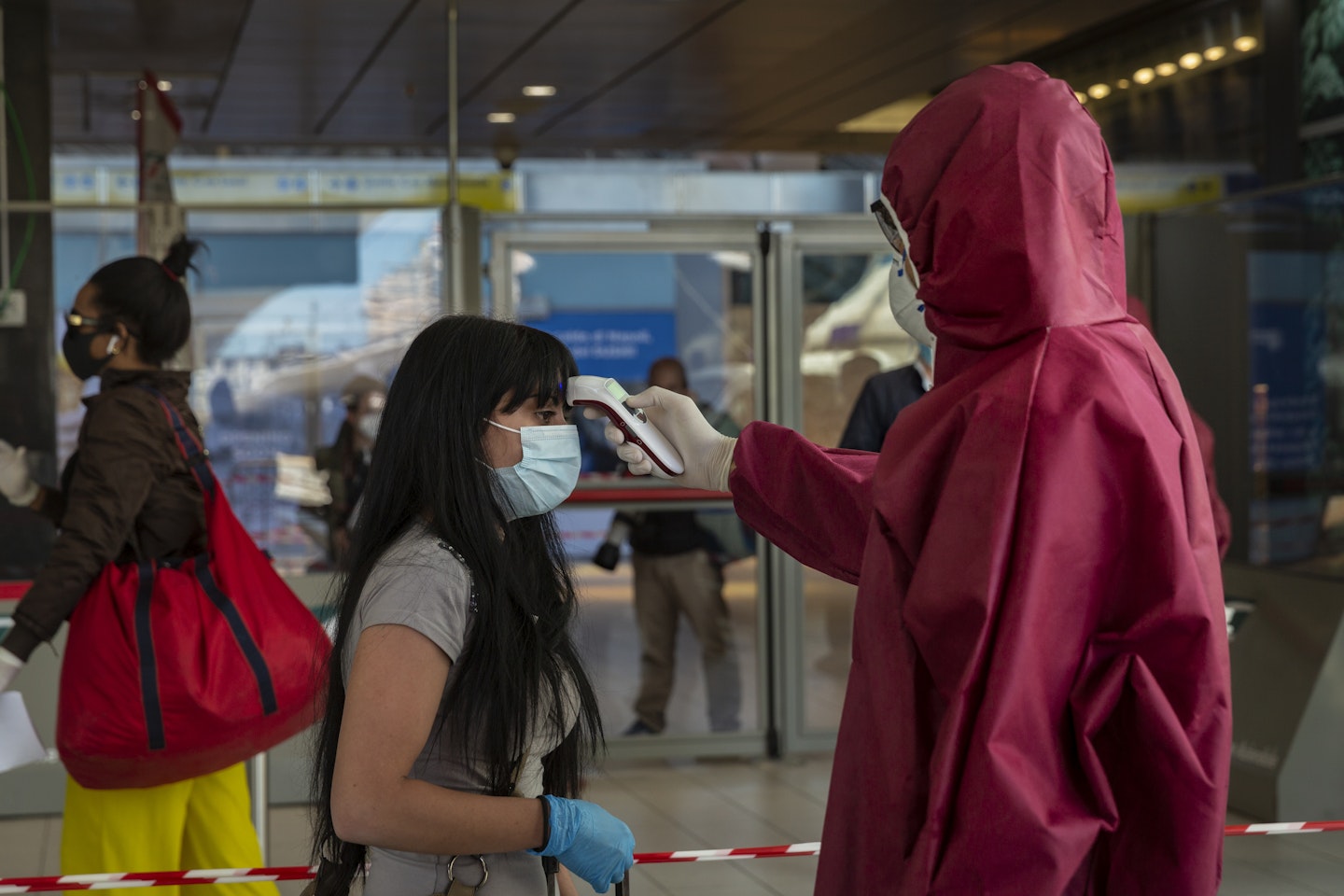 35 of 47
35 of 47Naples, Italy
A woman has her temperature taken upon arrival at Naples' Central Station 4 May 4 2020.
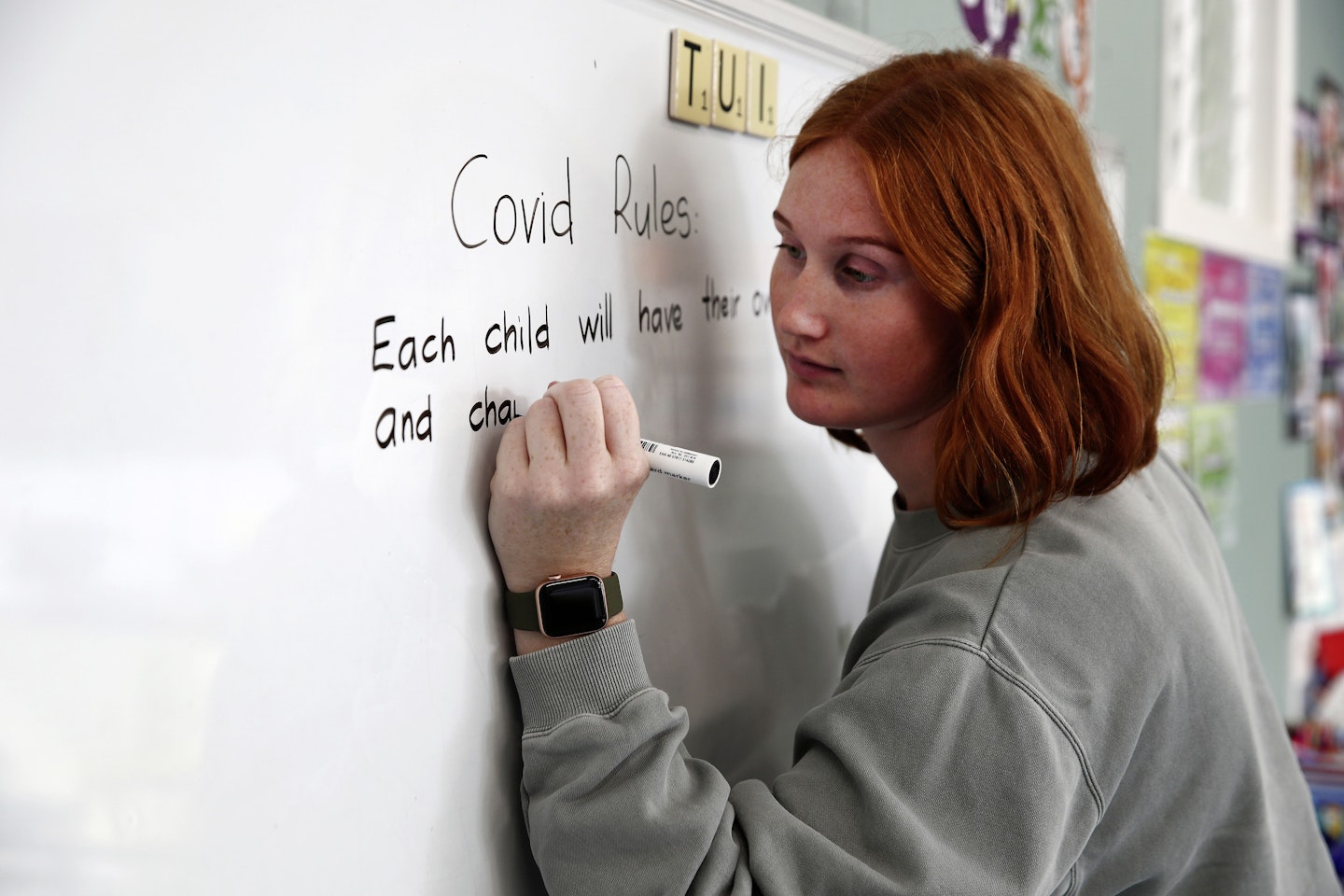 36 of 47
36 of 47Auckland, New Zealand
As schools prepare for students up to Year 10 who can't study from home or whose parents need to return to work to return to school, a teacher write Covid-19 instructions on the white board.
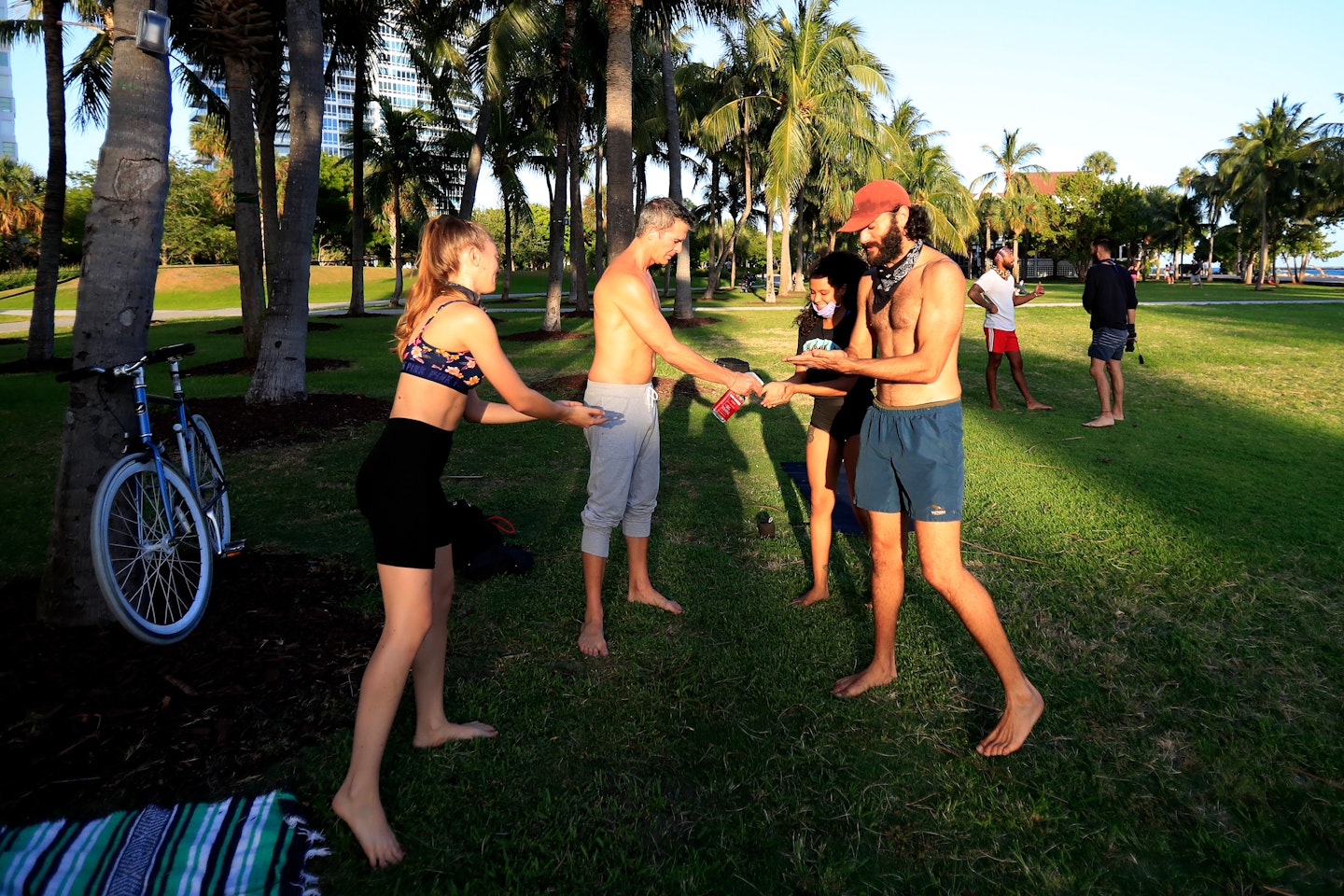 37 of 47
37 of 47Miami, Florida
People share alcohol-based hand sanitszer in South Pointe Park on 29 April 2020.
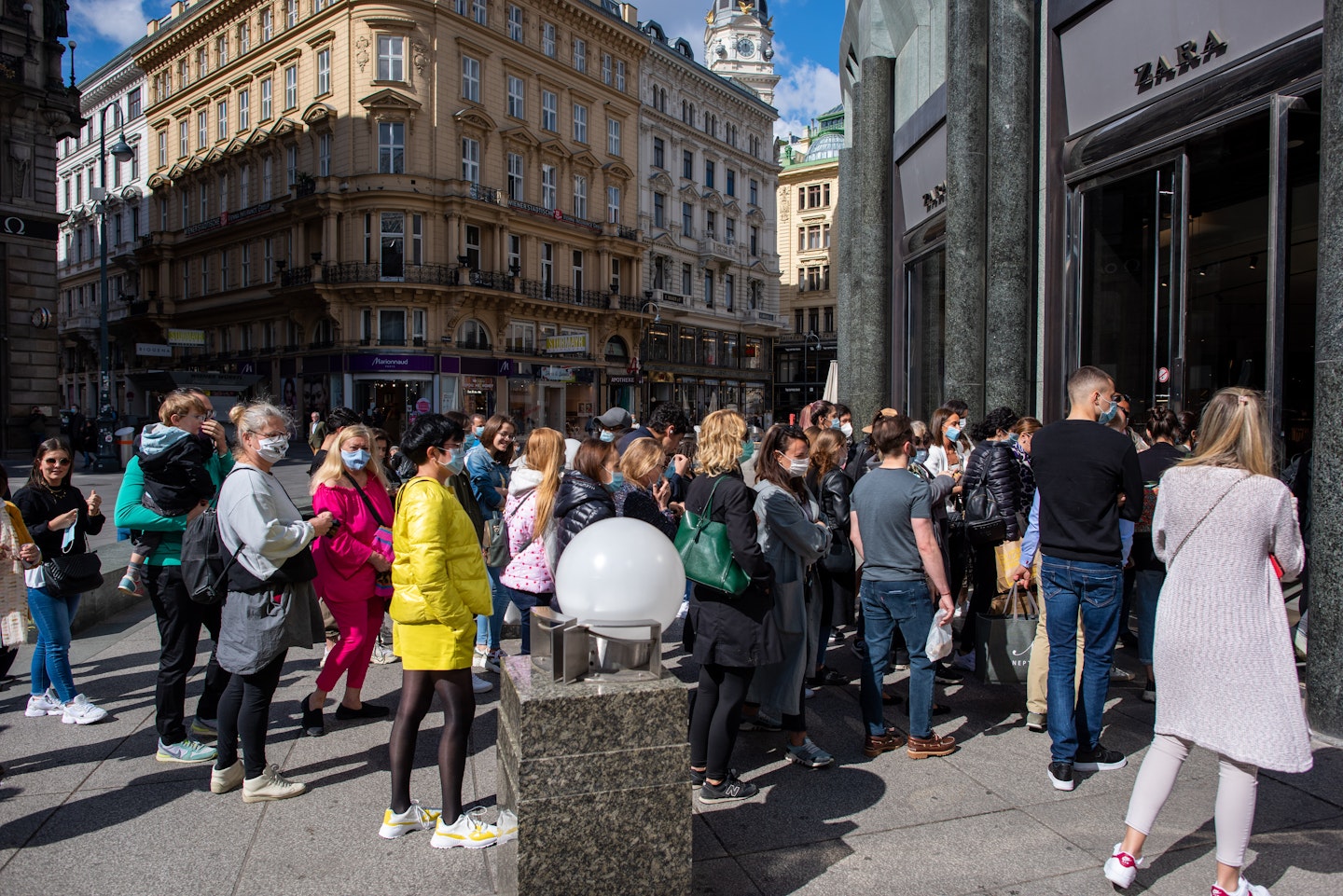 38 of 47
38 of 47Vienna, Austria
Shoppers rush into a clothing store, which has opened for the first time since the government imposed restrictions to slow the spread of coronavirus on 2 May 2020.
 39 of 47
39 of 47Amsterdam, The Netherlands
Restaurant Mediamatic in Amsterdam offers what they call 'corona-proof' dining.
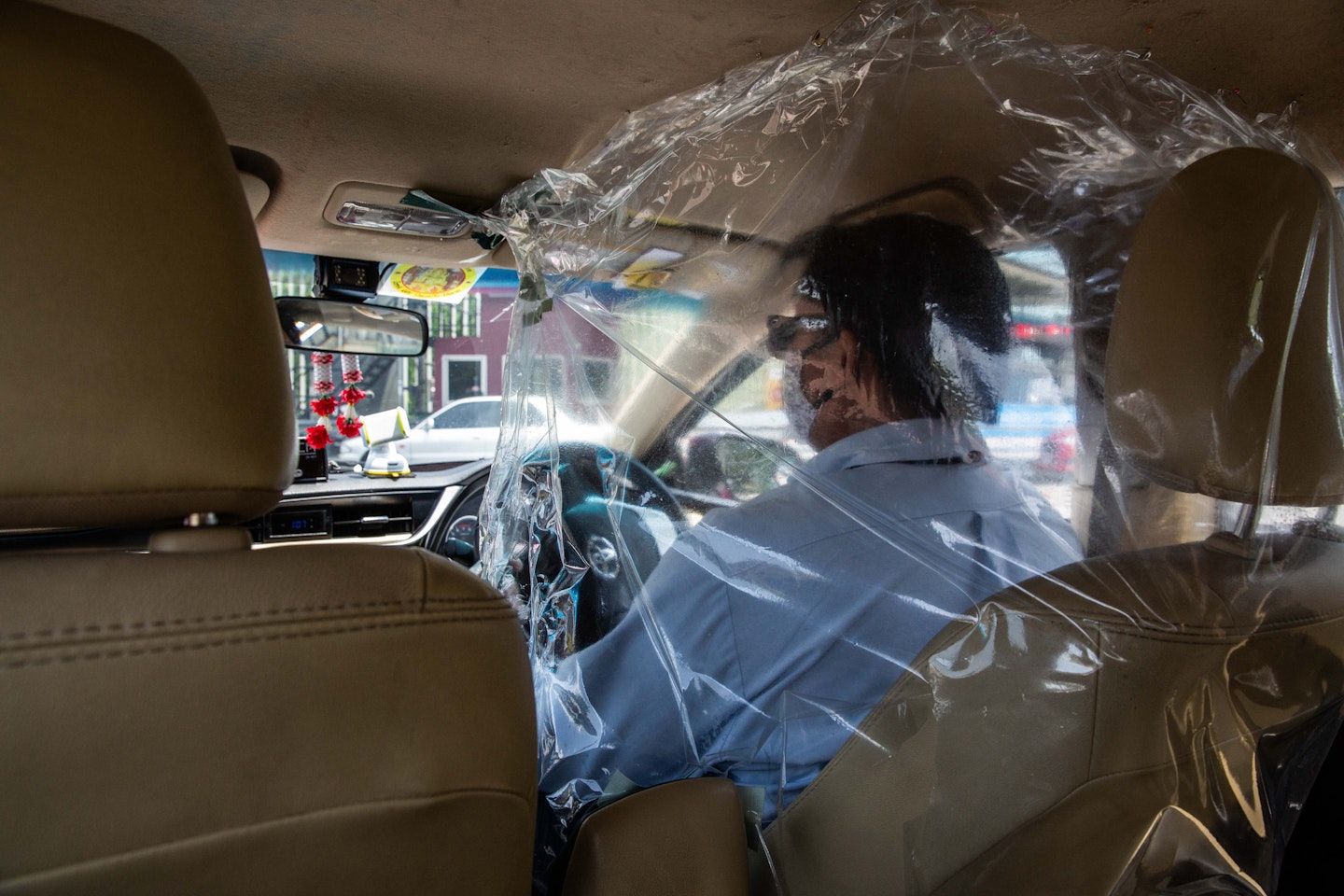 40 of 47
40 of 47Bangkok, Thailand
A taxi driver tries to protect himself with a plastic shield after Thailand's lockdown was partially lifted on 3 May 2020 allowing markets, parks, barber shops and restaurants to open with proper social distancing measures.
 41 of 47
41 of 47Taipei, Taiwan
Students eat their lunch on desks with plastic partitions as a preventive measure at Dajia Elementary School in Taipei on 29 April 2020.
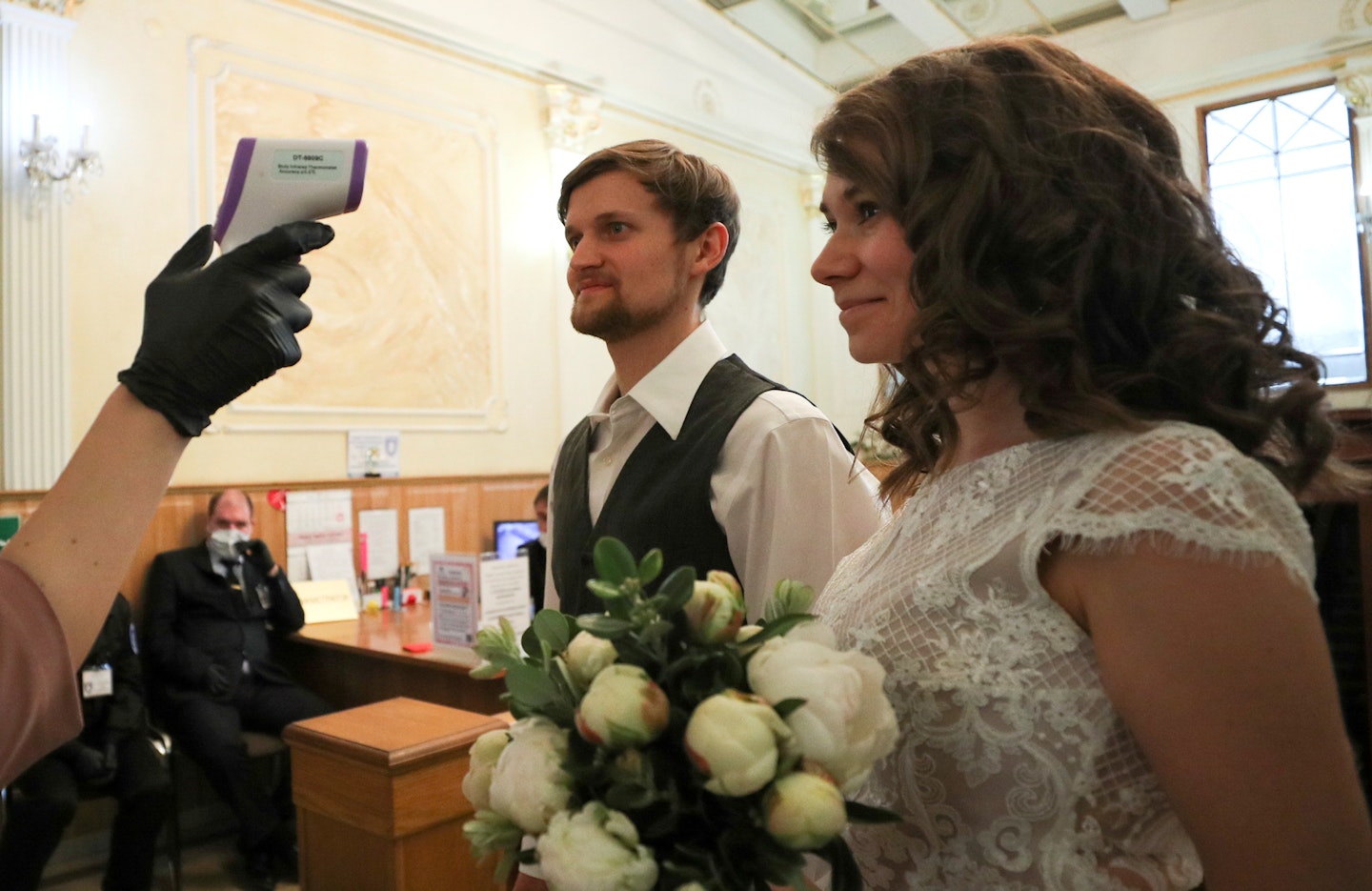 42 of 47
42 of 47Moscow, Russia
A couple has their temperature taken before their wedding ceremony at Moscow's No1 Civil Registry Office on the first Sunday after Orthodox Easter.
 43 of 47
43 of 47Moscow, Russia
The couple shows off their wedding rings to a phone, as currently, relatives and friends are not allowed to attend marriage ceremonies due to safety measures aimed at countering the spread of the disease.
 44 of 47
44 of 47Milan, Italy
As the lockdown ends in Italy, the government has allowed bars and restaurants to reopen exclusively for take-away food.
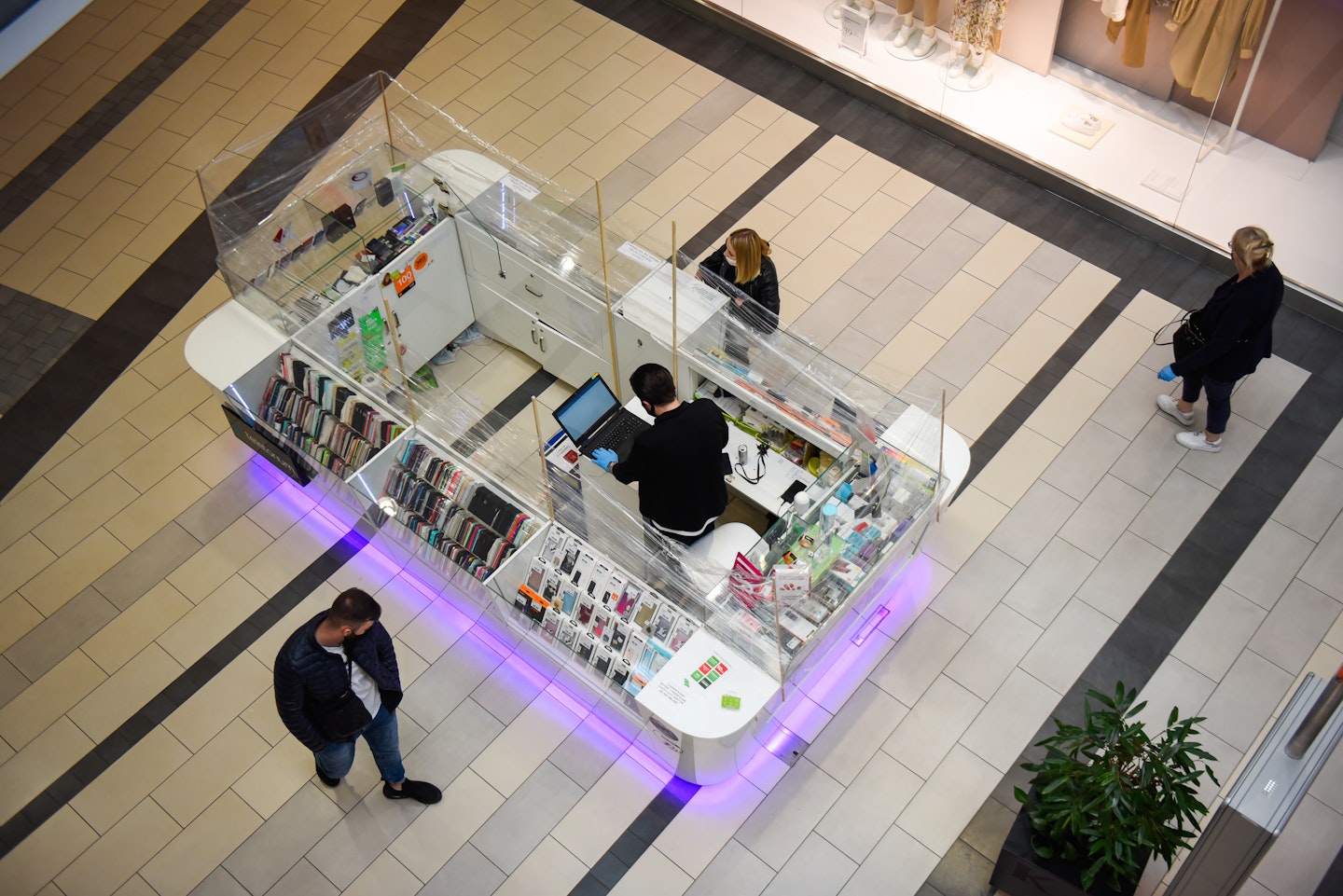 45 of 47
45 of 47Krakow, Poland
A kiosk worker wears a protective face mask as he speaks to a customer from inside an electronic point covered with plastic inside Kazimierz Shopping mall on 4 May 2020.
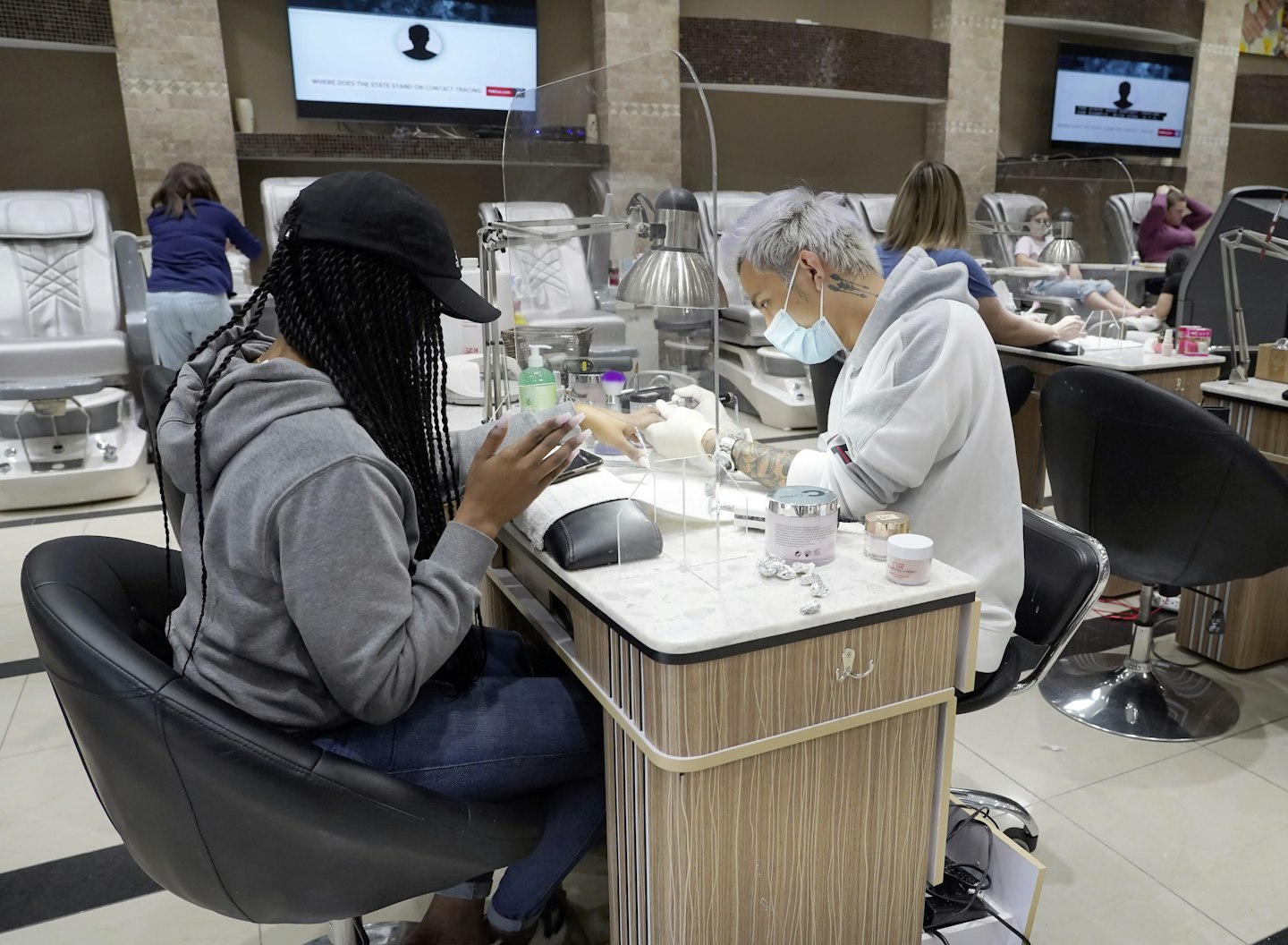 46 of 47
46 of 47Atlanta, Georgia, USA
Surin Nguyen, wearing protection gear, works on the nails of a customer at Allure Nail Bar in Atlanta, Georgia on 21 April 2020 after Governor Brian Kemp eased restrictions allowing some businesses, including hair and nail salons, to reopen in the US state of Georgia after a four-week lockdown.
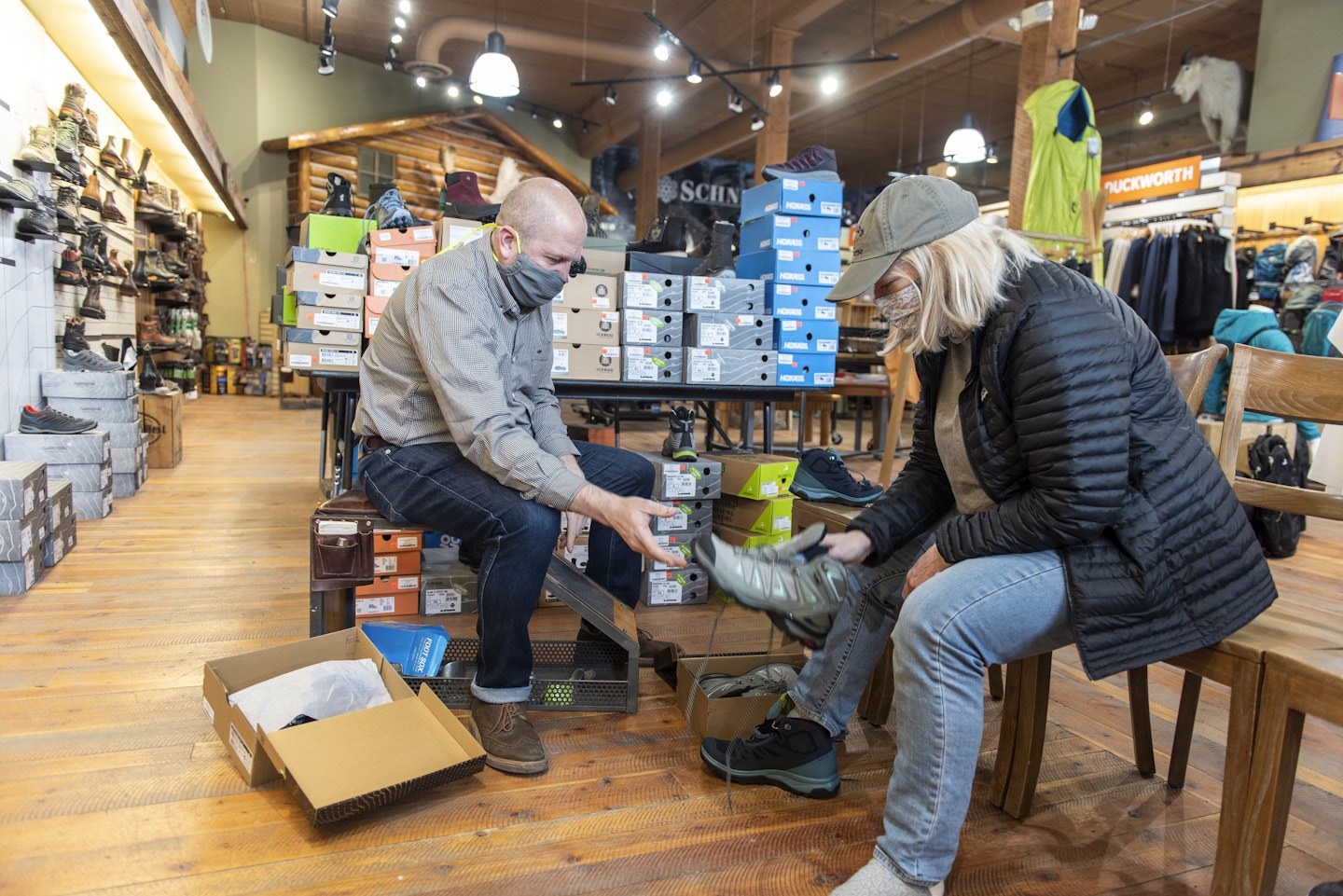 47 of 47
47 of 47Bozeman, Montana, USA
Kurt Smith wears a mask while helping a customer at the recently reopened Schnee's Boots, Shoes and Outdoors on 4 May 2020.
